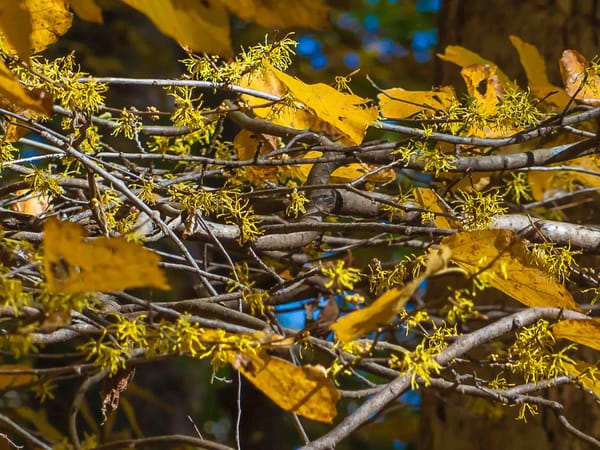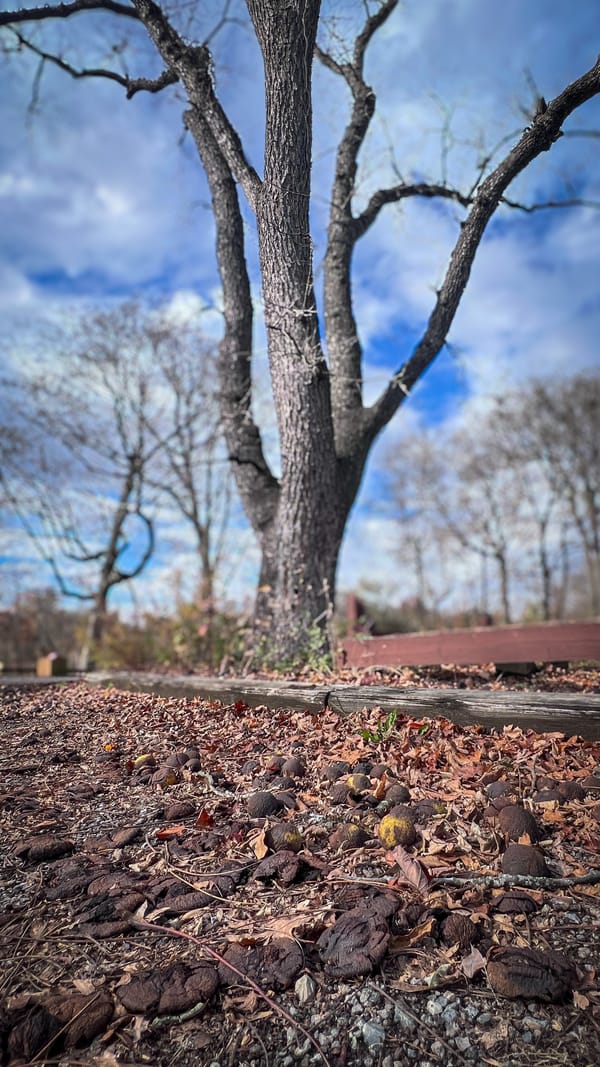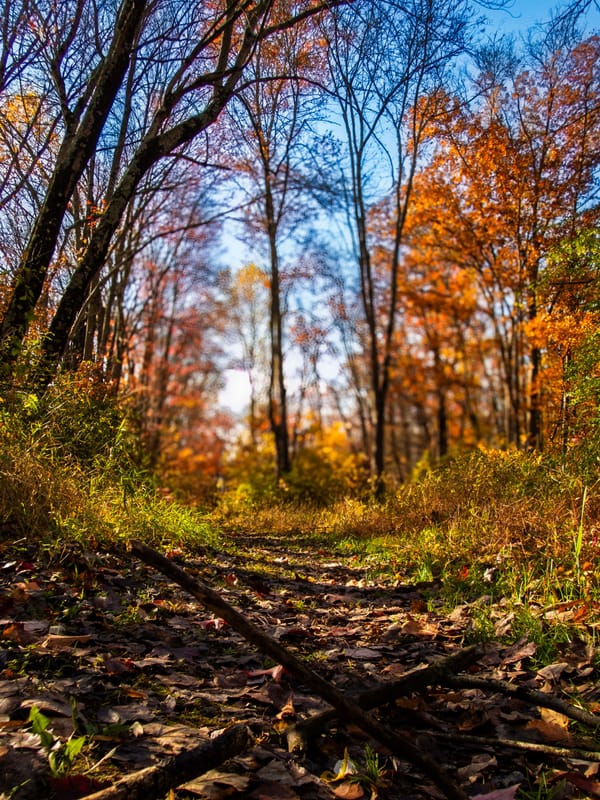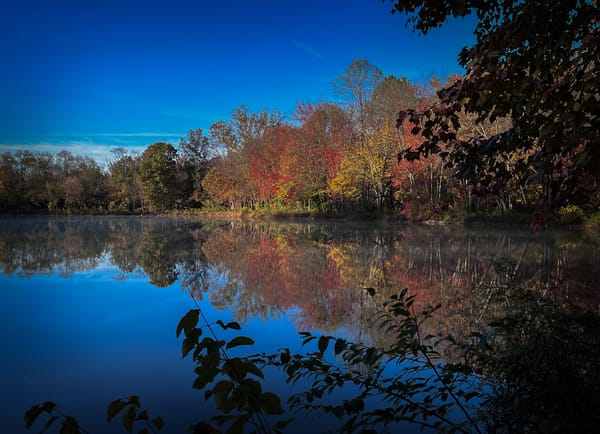Asters, Beggarticks, Smartweeds, & Goldenrod
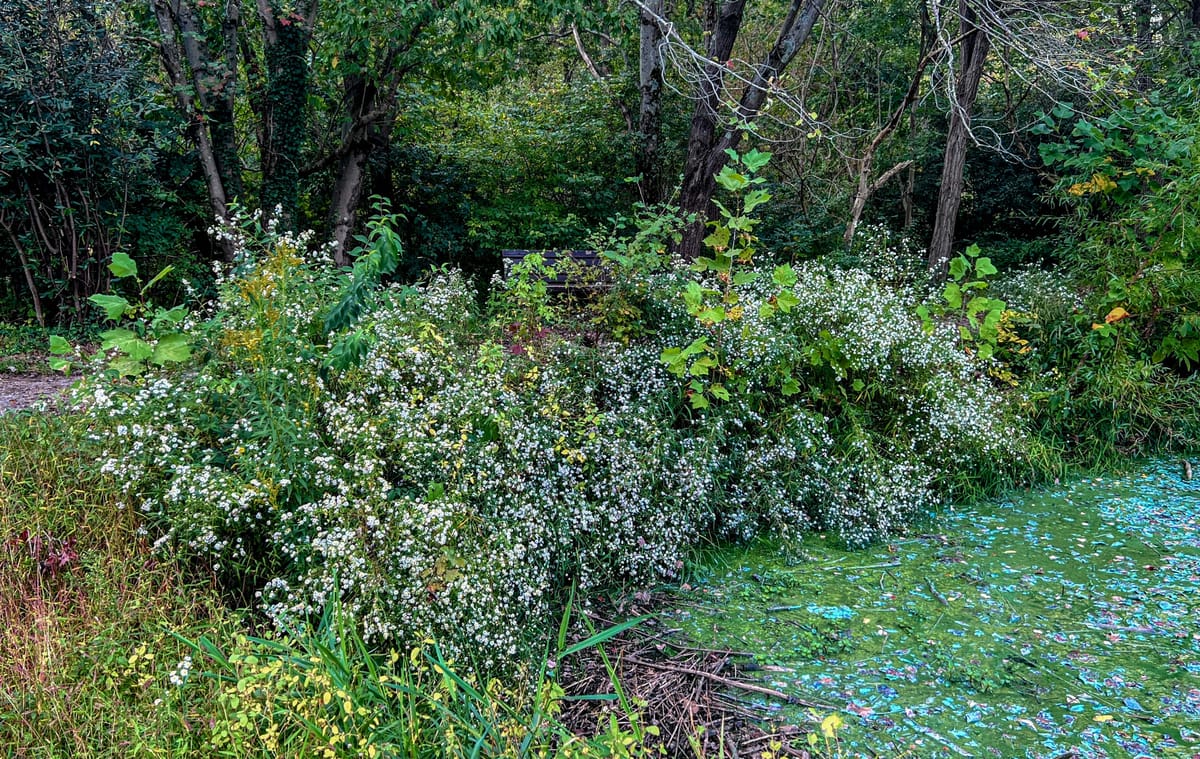
Thanks to everyone for your kind words after my talk at the library. I'll eventually post all the resources I used putting it together here.
The past couple of weeks I have been either preparing for the talk or waiting for my camera gear to return from Hackensack where it is in the capable hands of Olympus repair technicians. I hope it find's it's way home soon, until then I am relying on my trusty iPhone for photos.
In the late summer and early fall the edges of the ponds at the park are a mix of white, yellow, and pink wildflowers. This beautiful ring of vegetation supports pollinators, birds, and other wildlife after many other plants have finished flowering.
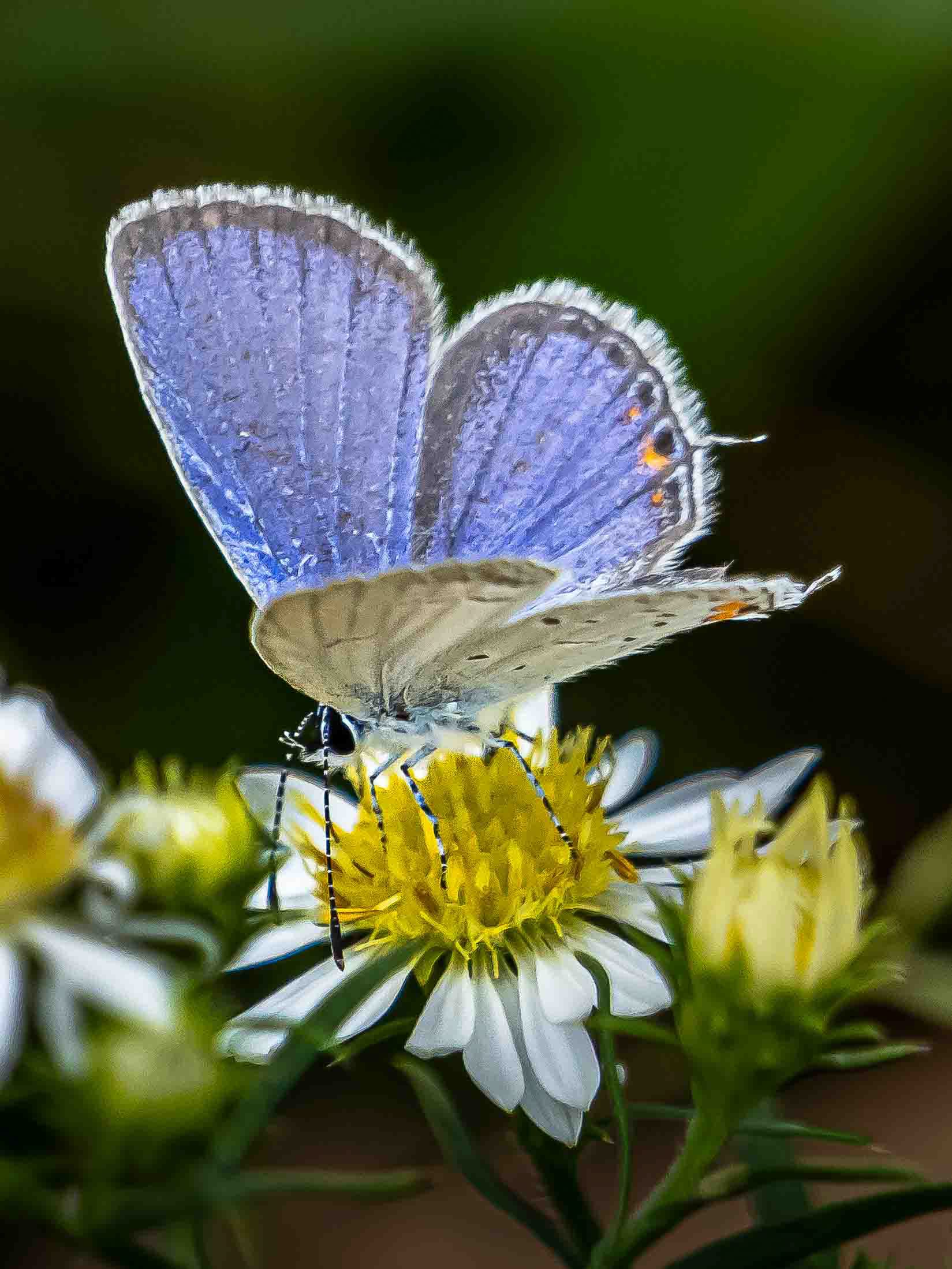
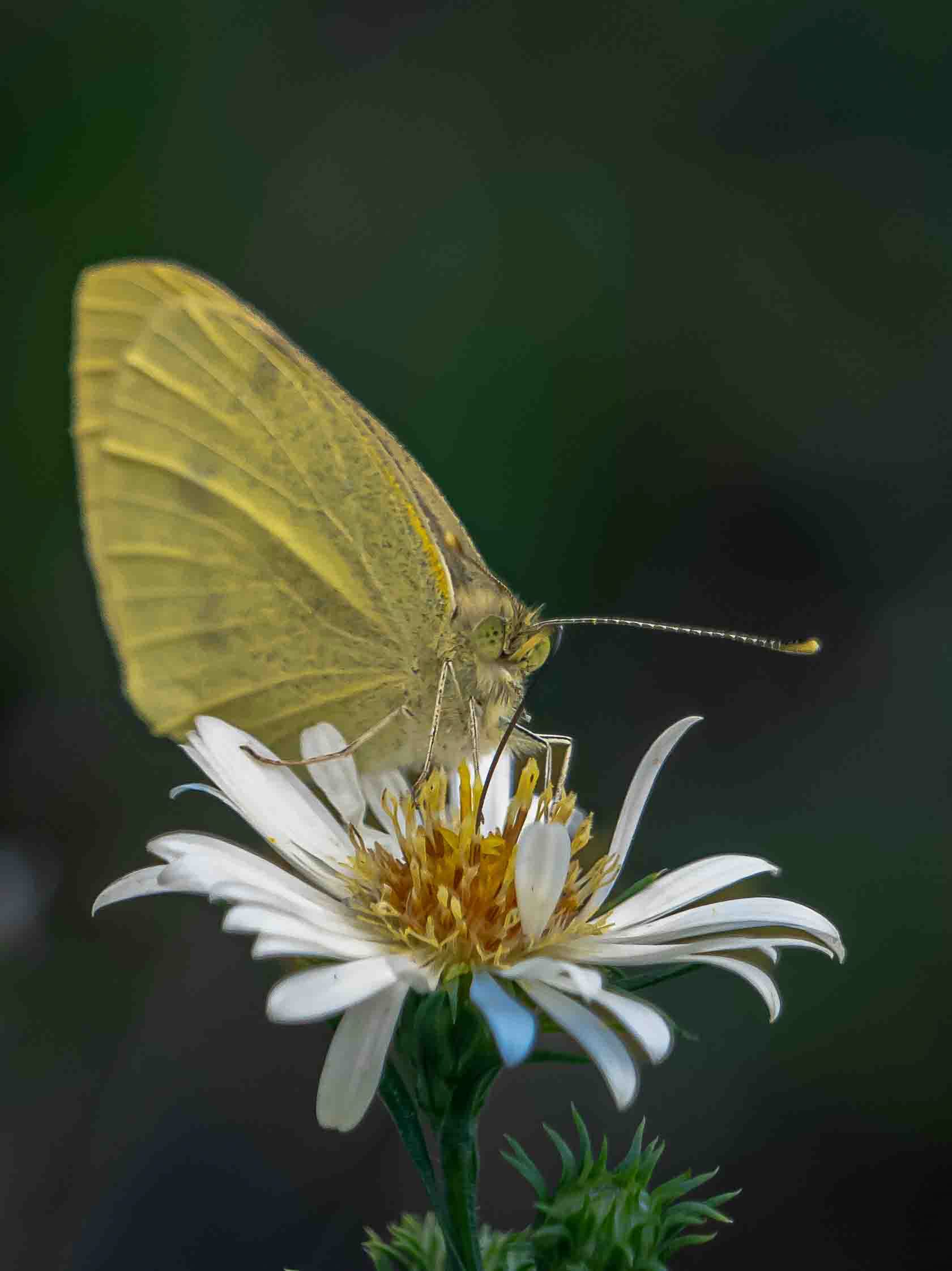
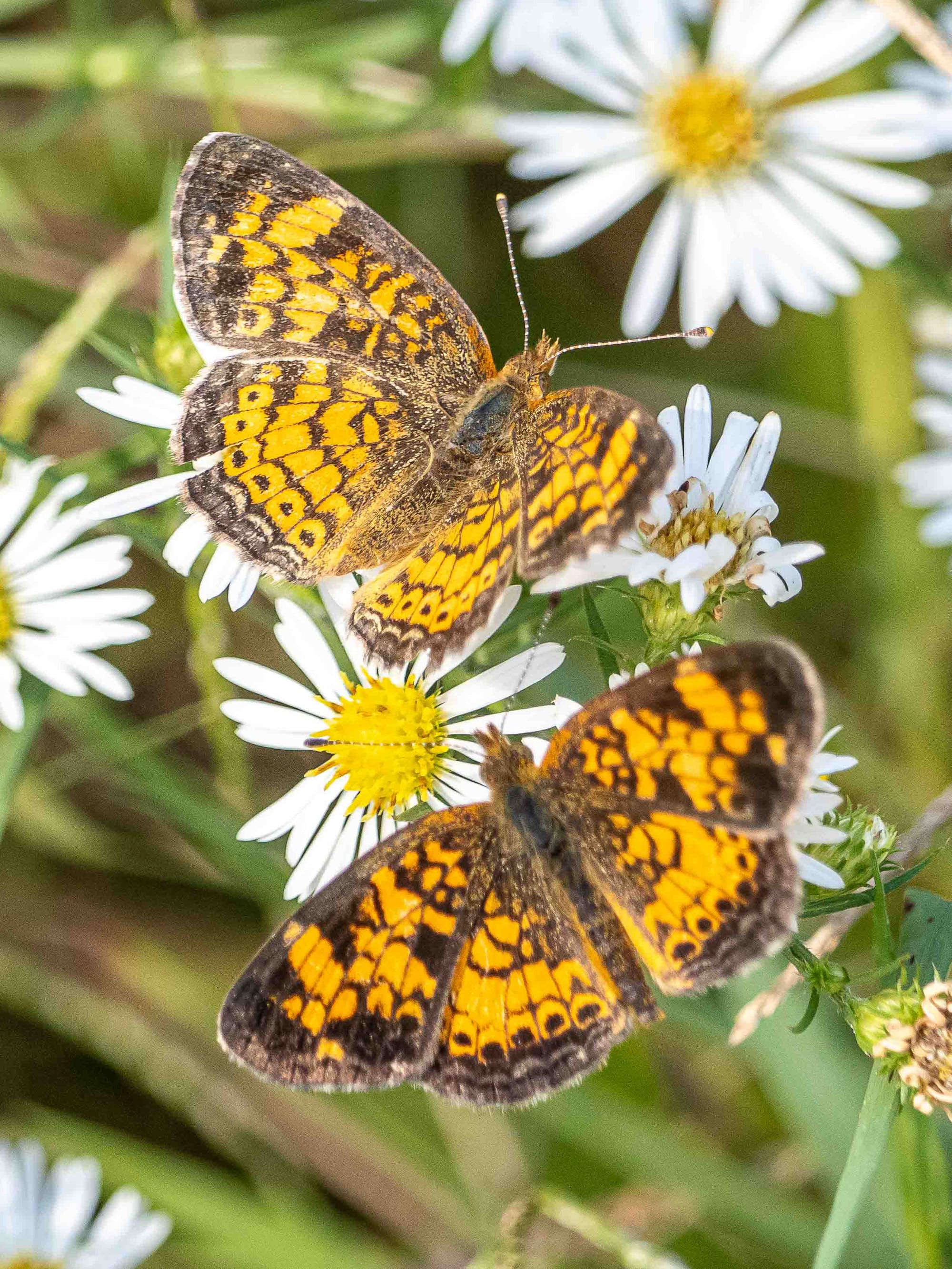
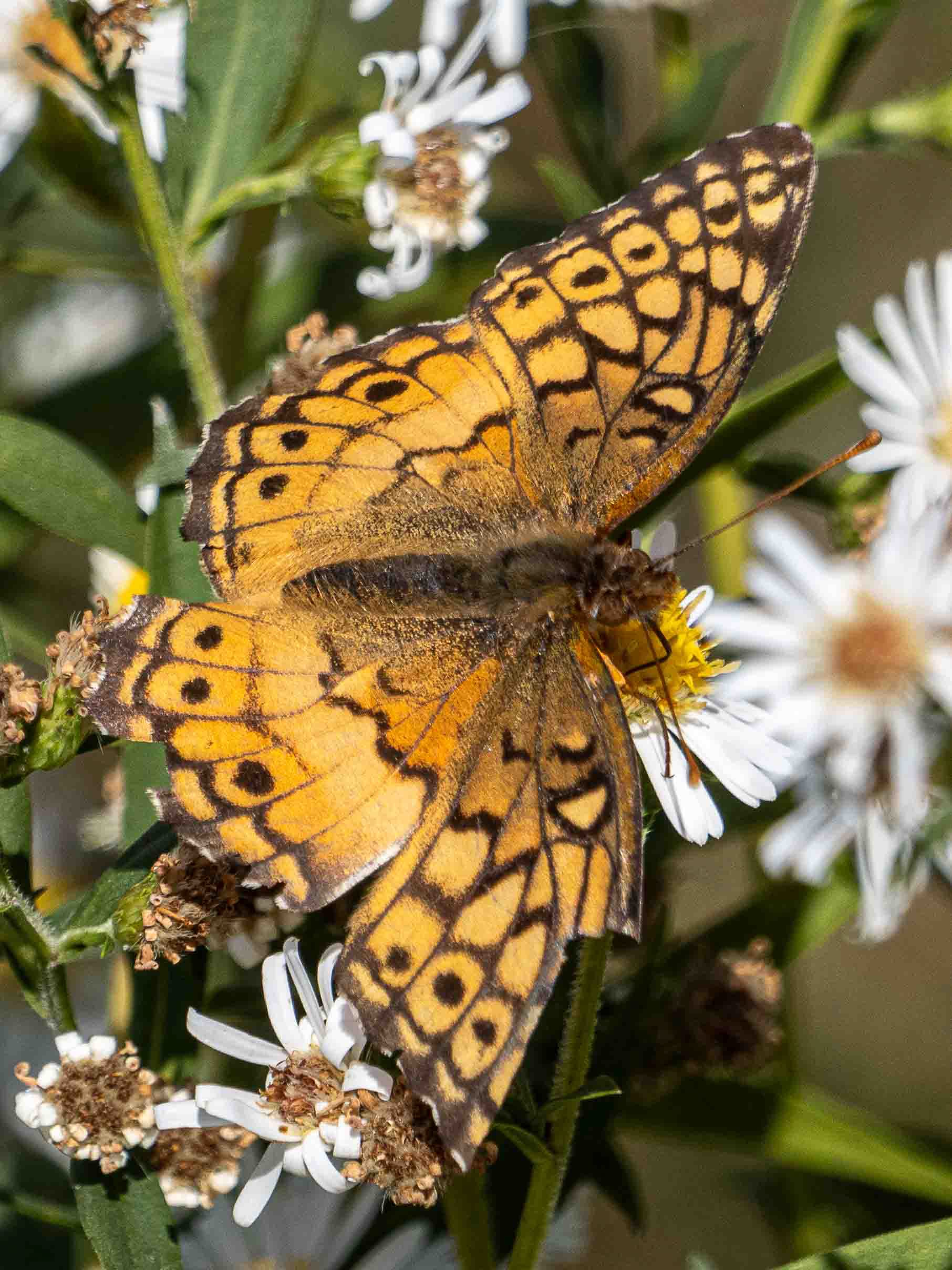
Butterflies are big Aster fans, Eastern Tailed Blue, Orange Sulphur, Pearl Crescents, and Variegated Fritillary
Here are a few of the species you're likely to see.
Aster Family
The asters, goldenrod, snakeroot, and beggarticks belong to the Aster Family (Asteraceae). Aster derives from the Greek word astra, or star because these plants have a star-like floral shape. What looks like one daisy-type flower is really many tiny flowers packed together. What looks like petals around the edge are ray flowers, and the center is filled with disc flowers that usually produce most of the nectar and seeds.
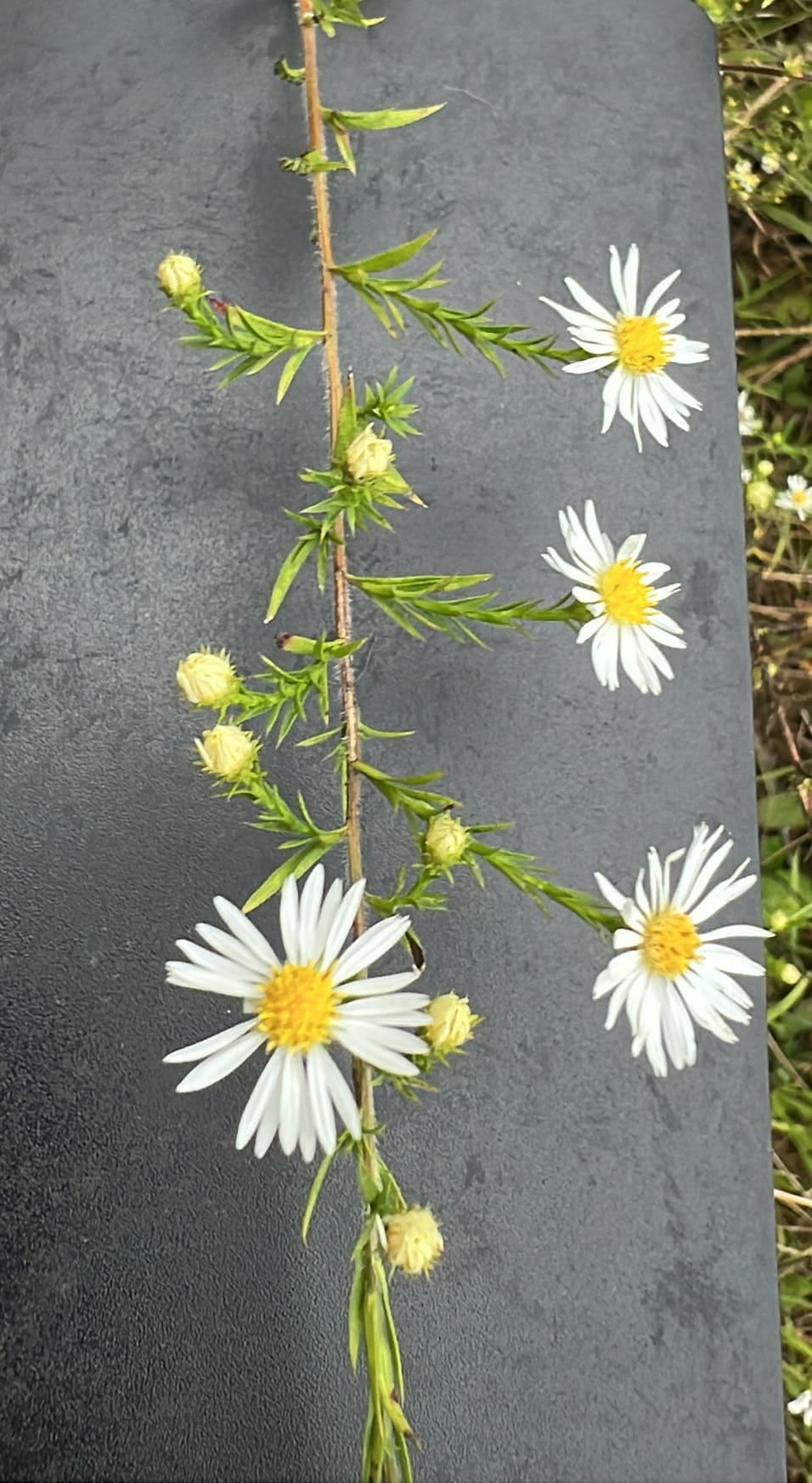
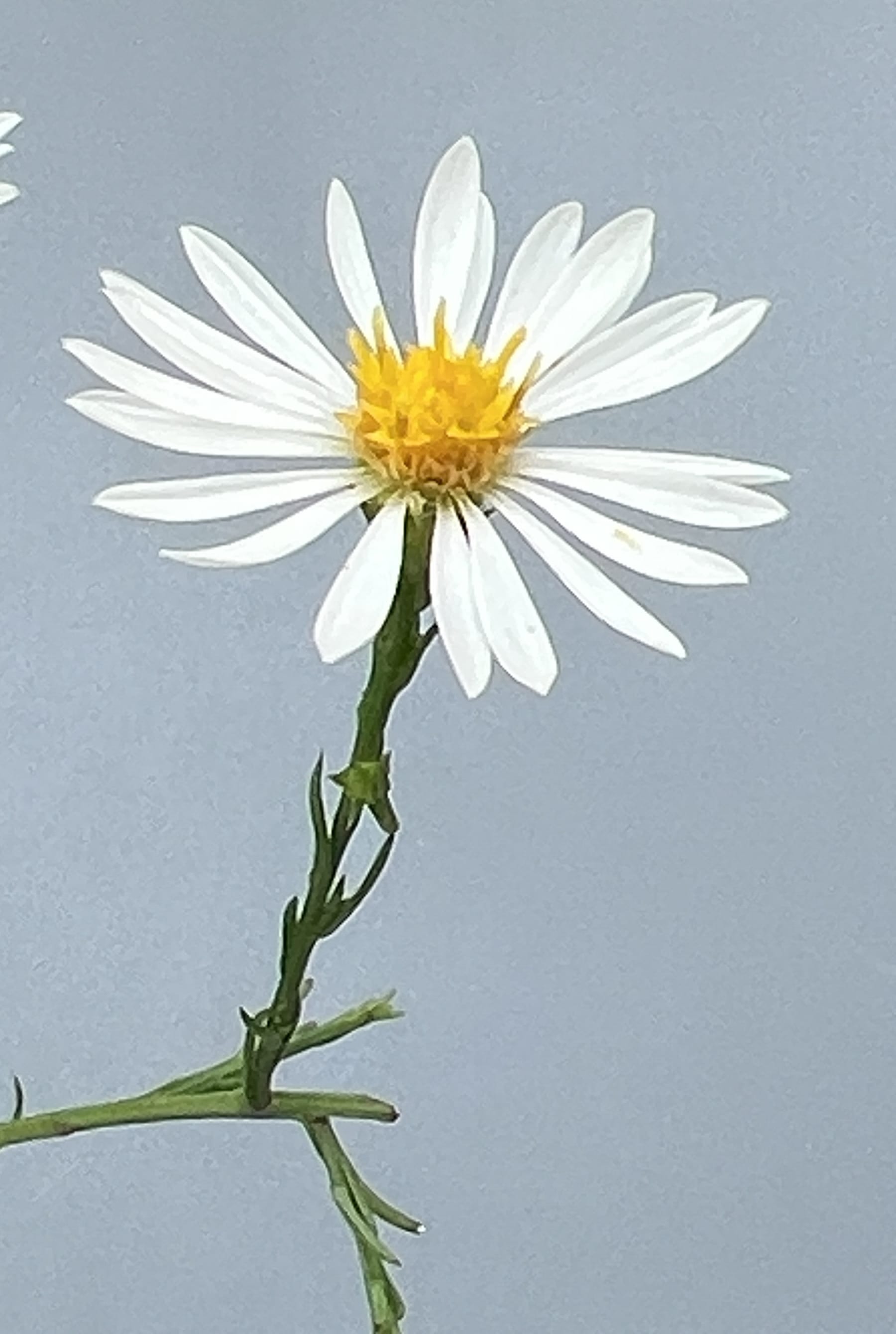
Harry White Oldfield Aster
Hairy White Oldfield Aster (Symphyotrichum pilosum)
Hairy stems, rough narrow leaves, and many small white flowers with yellow centers that turn reddish with age.
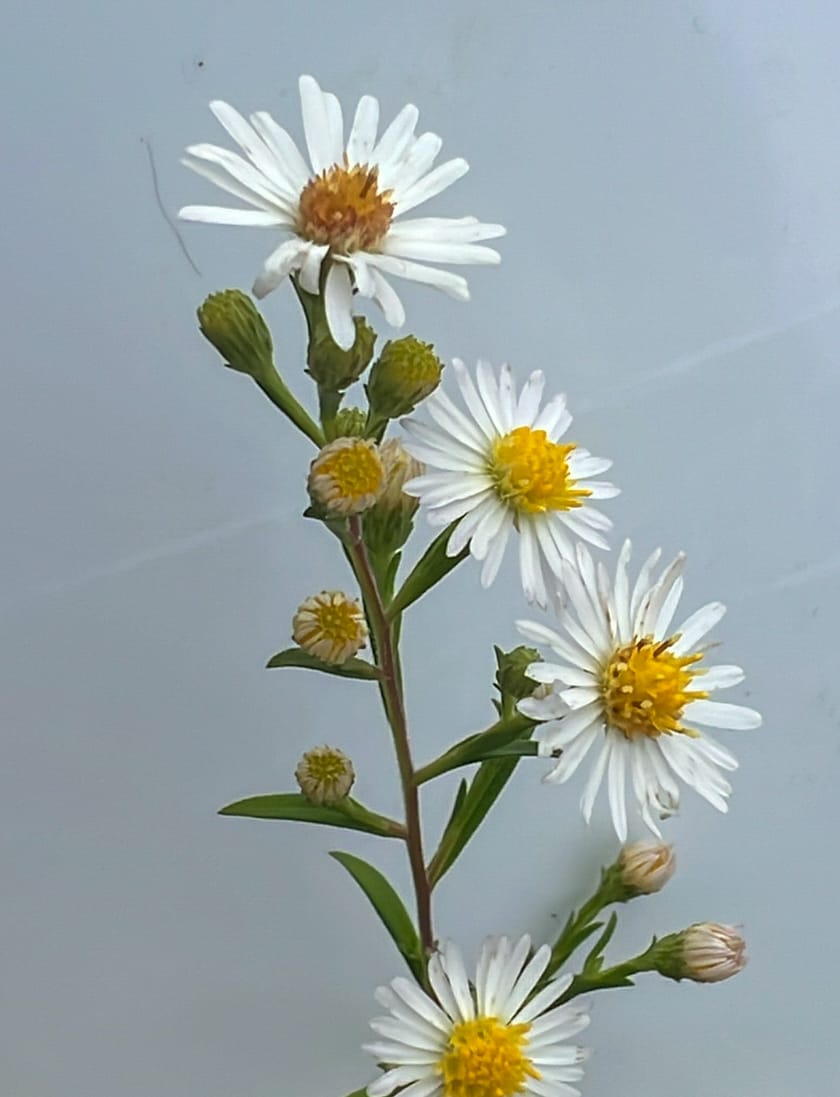
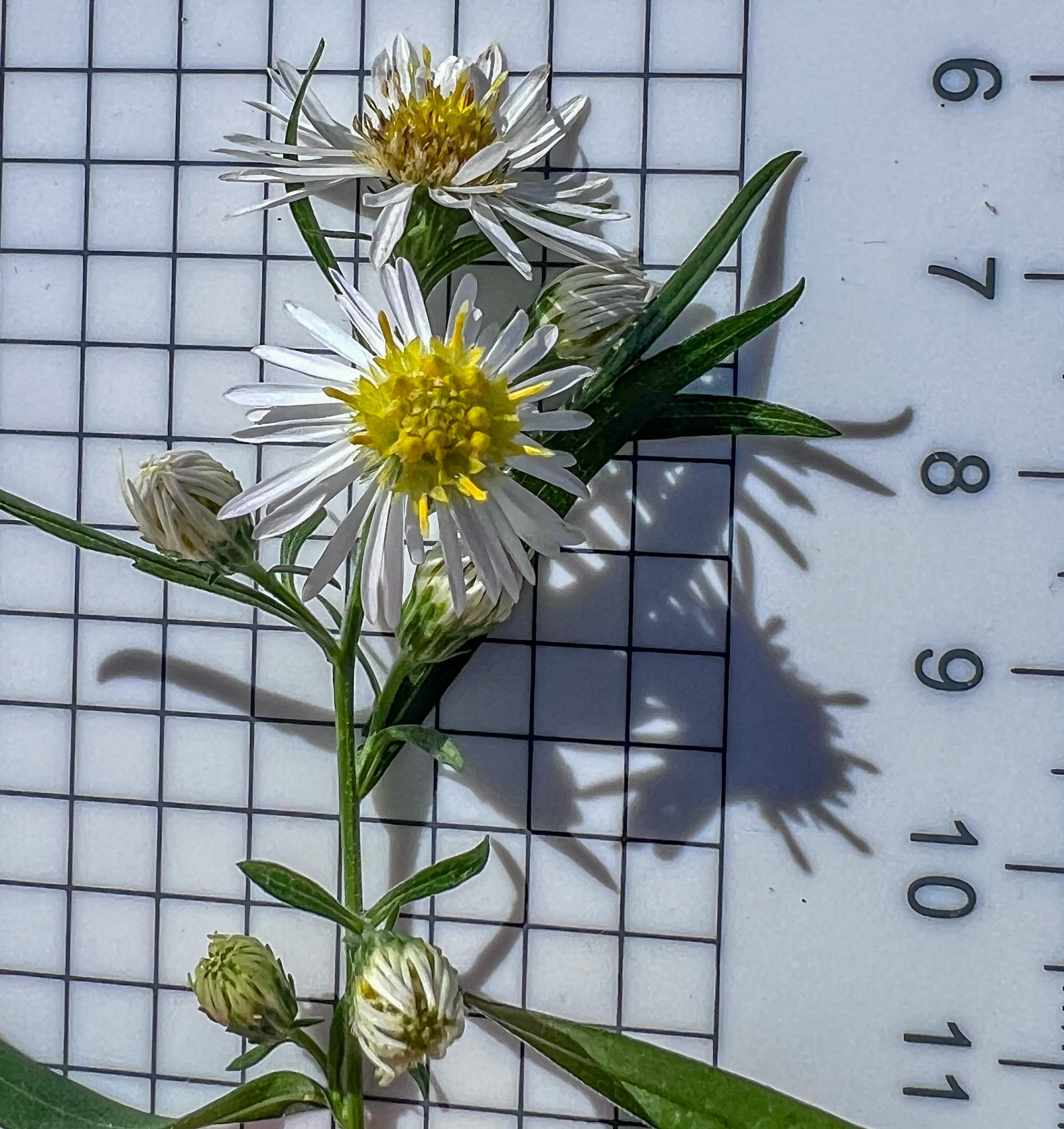
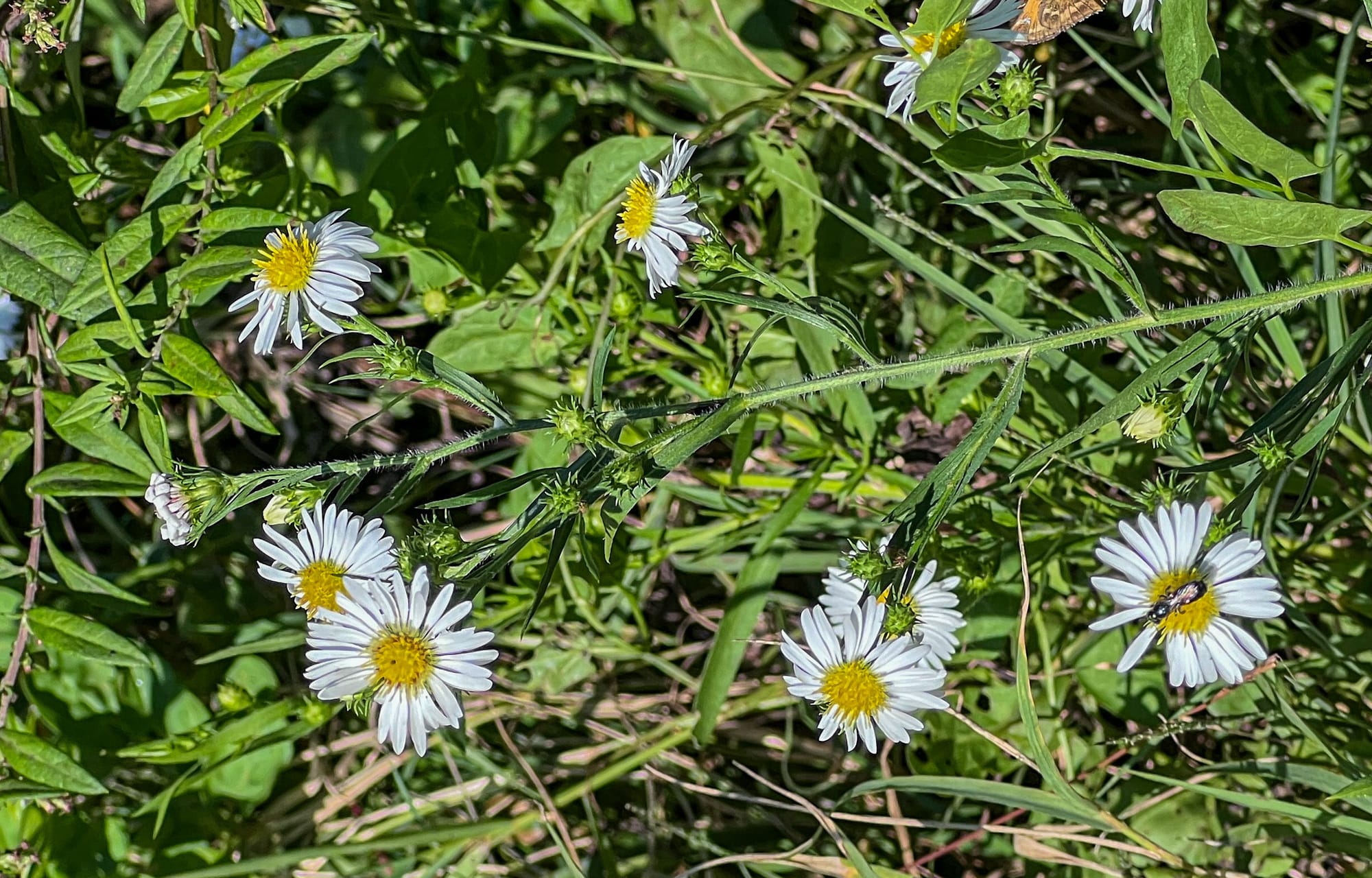
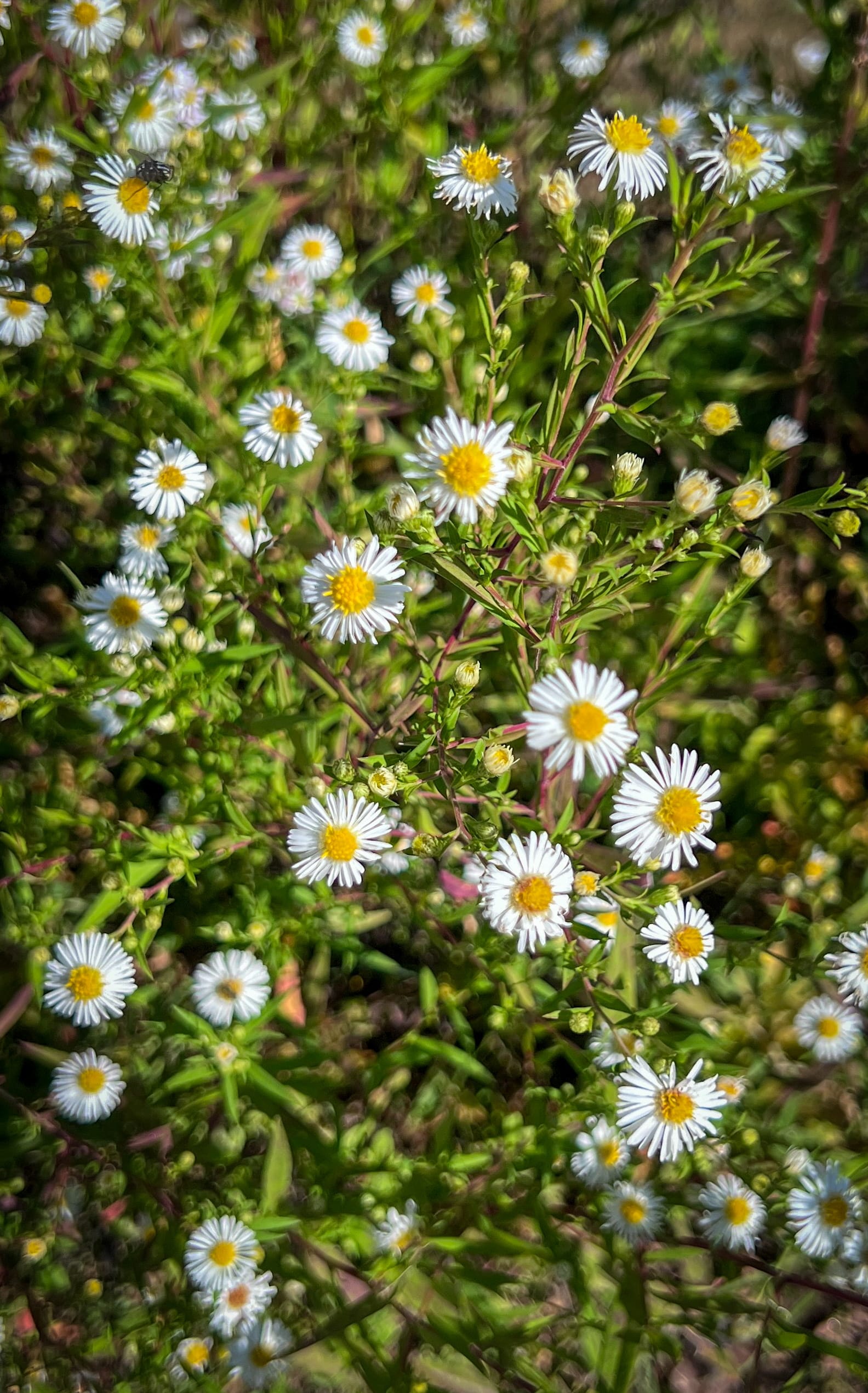
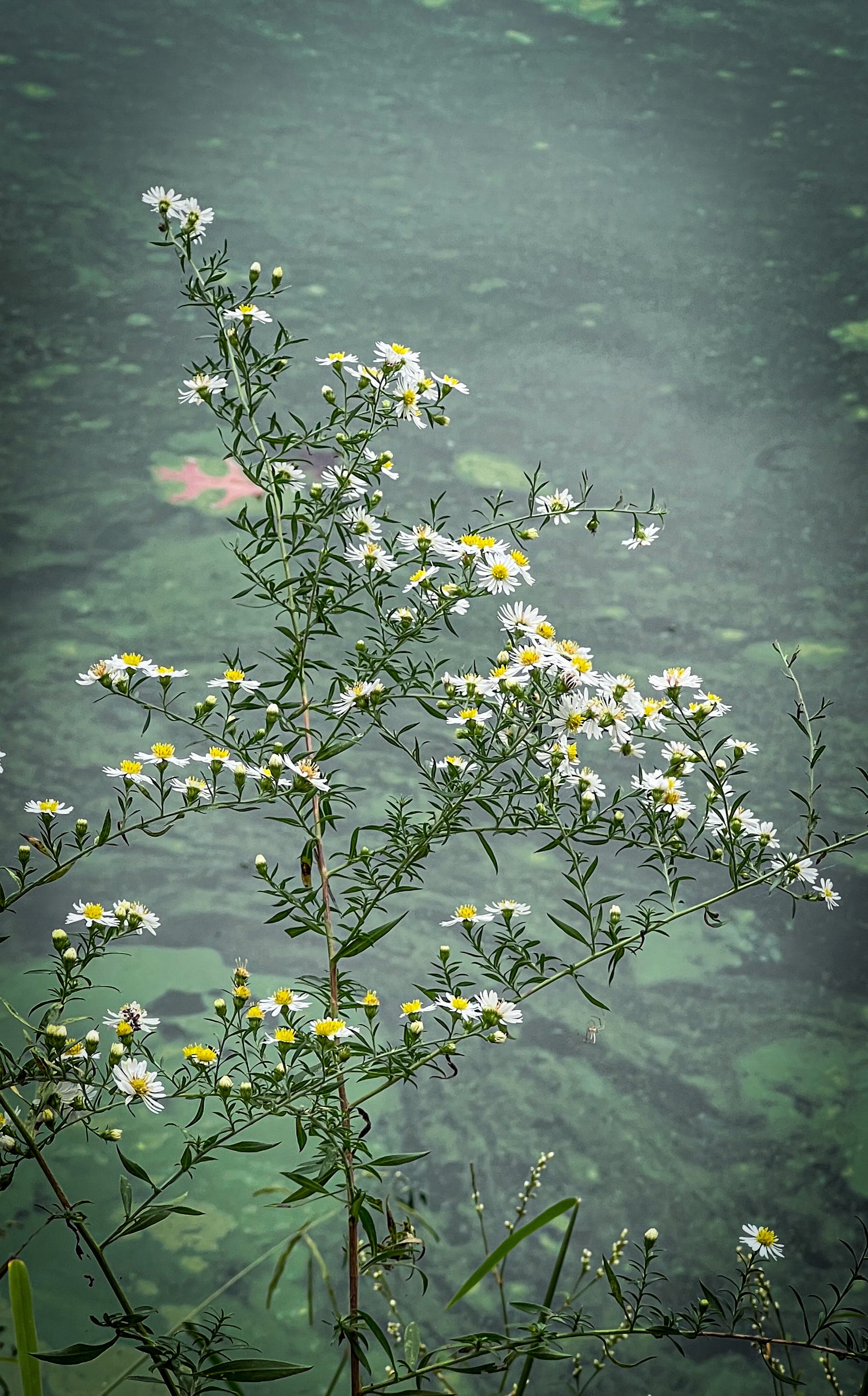
Panicled Aster
Panicled Aster (Symphyotrichum lanceolatum)
Tall, smooth stems, long narrow leaves that often wrap slightly around the stem, and large branched clusters of small white flowers.
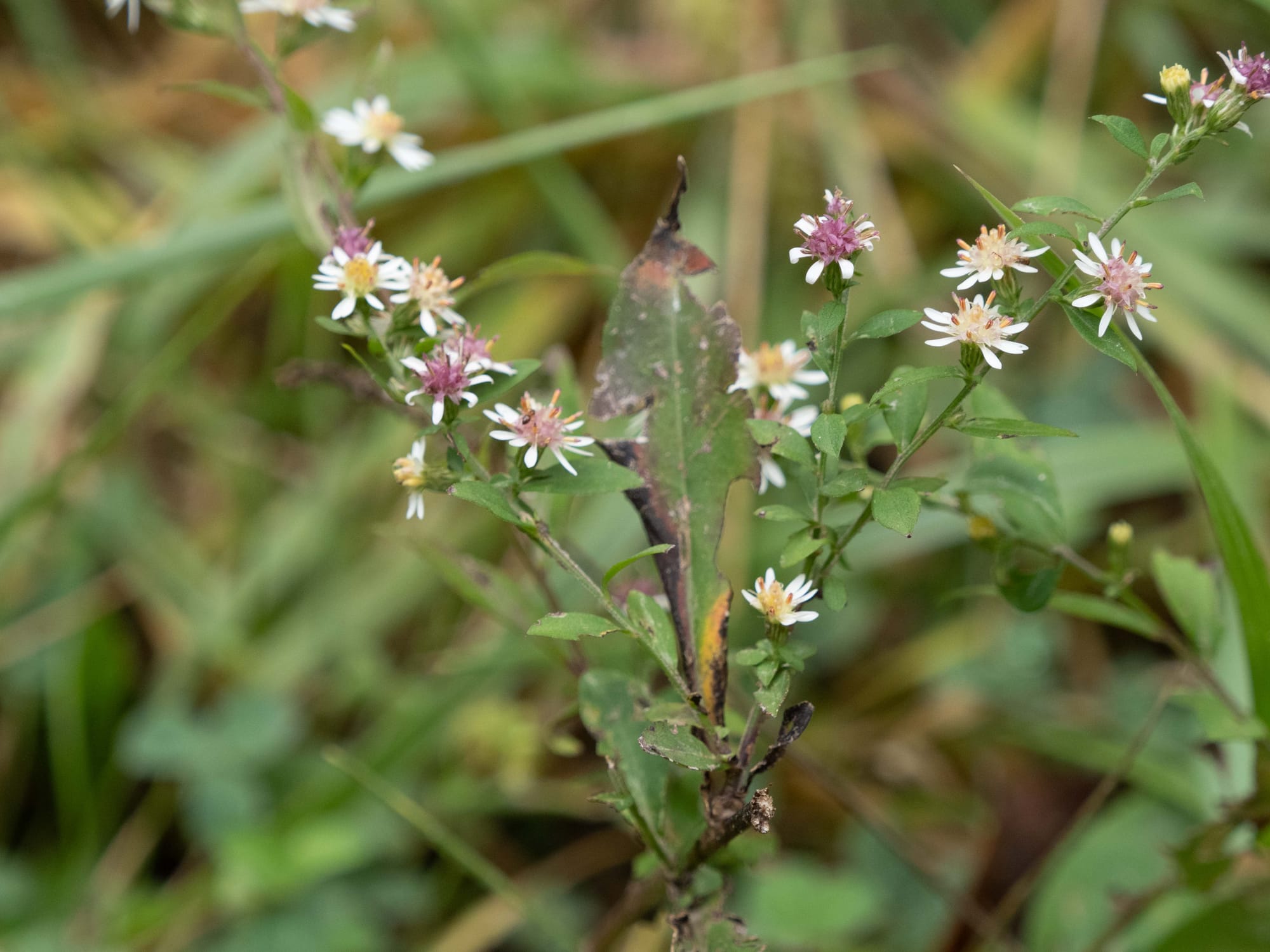
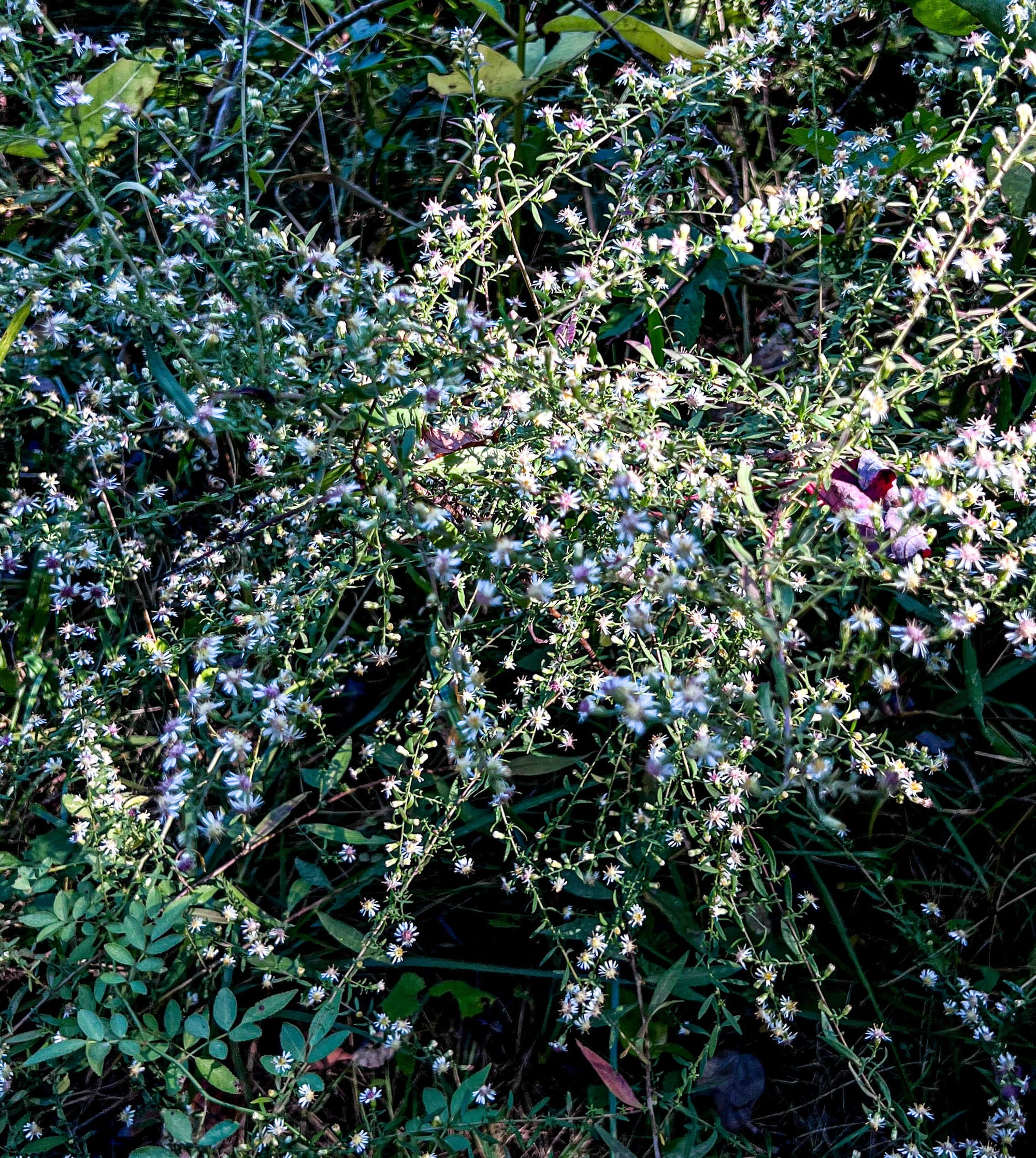
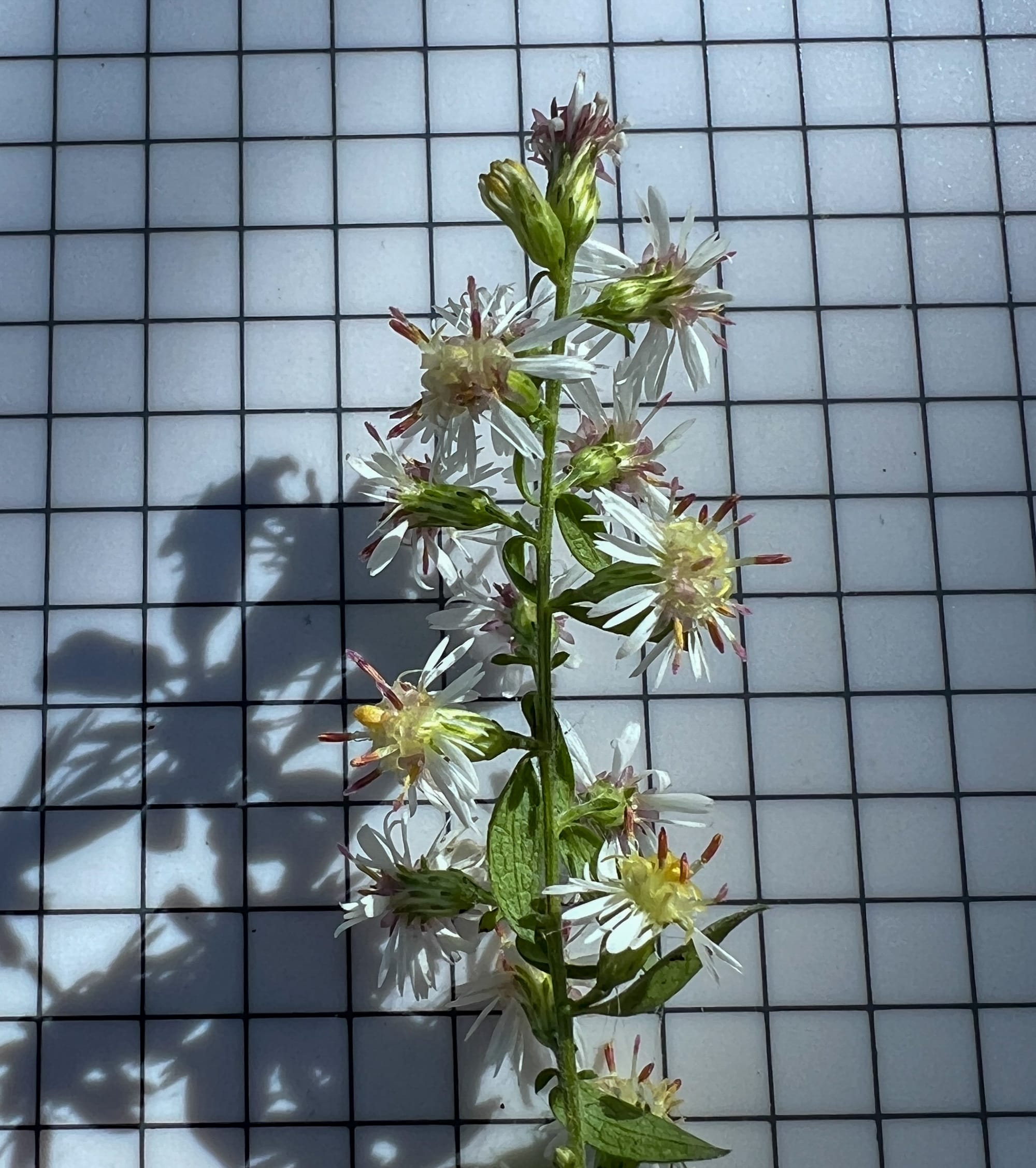
Calico Aster
Calico Aster (Symphyotrichum lateriflorum)
The smallest white flowers of the asters at the pond. Yellow flower centers that turn deep reddish-purple, arranged along the sides of arching stems (not just at the top). Leaves are narrower and less hairy. Shorter and often smaller plant than panicled or oldfield aster.
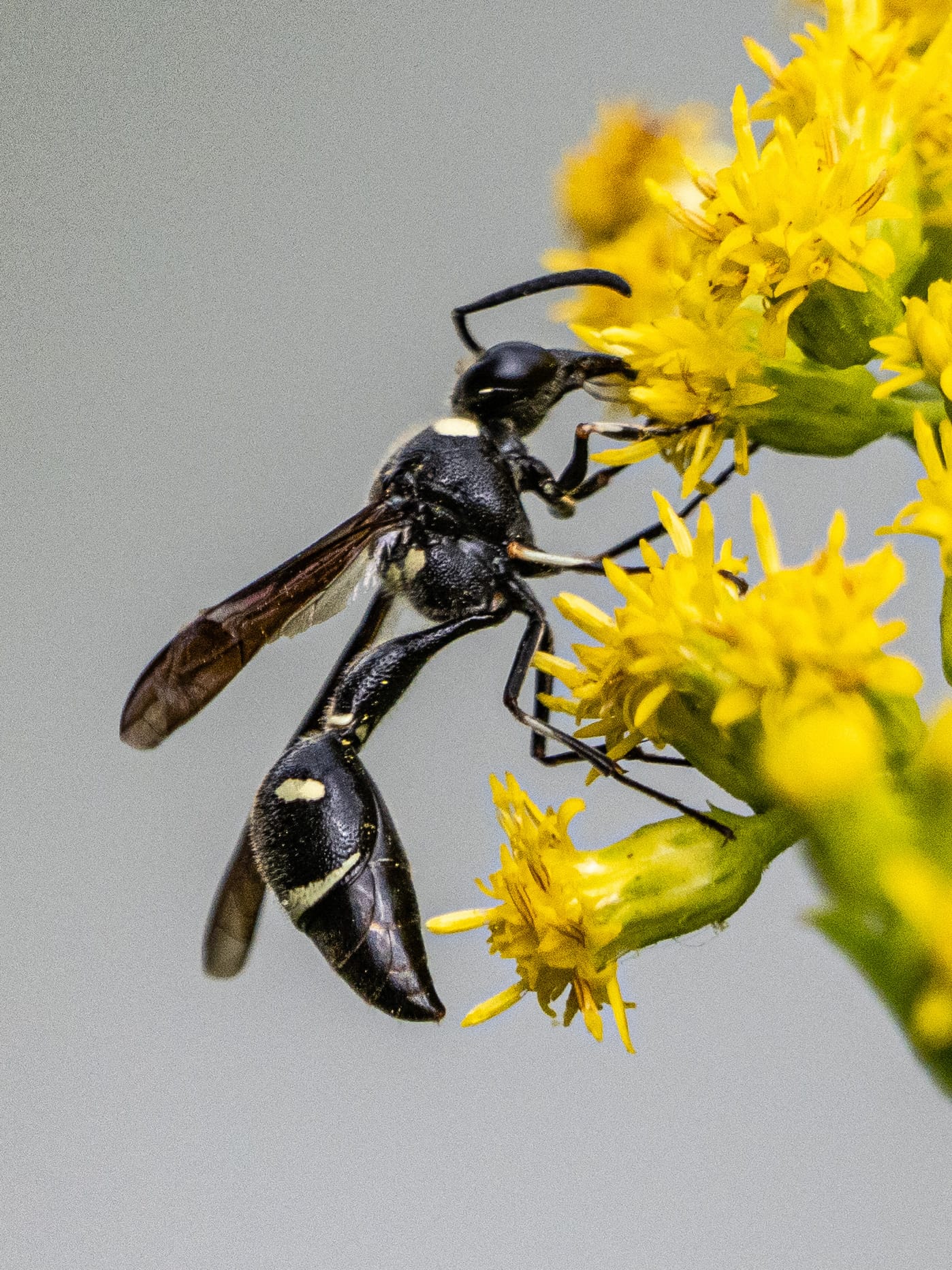
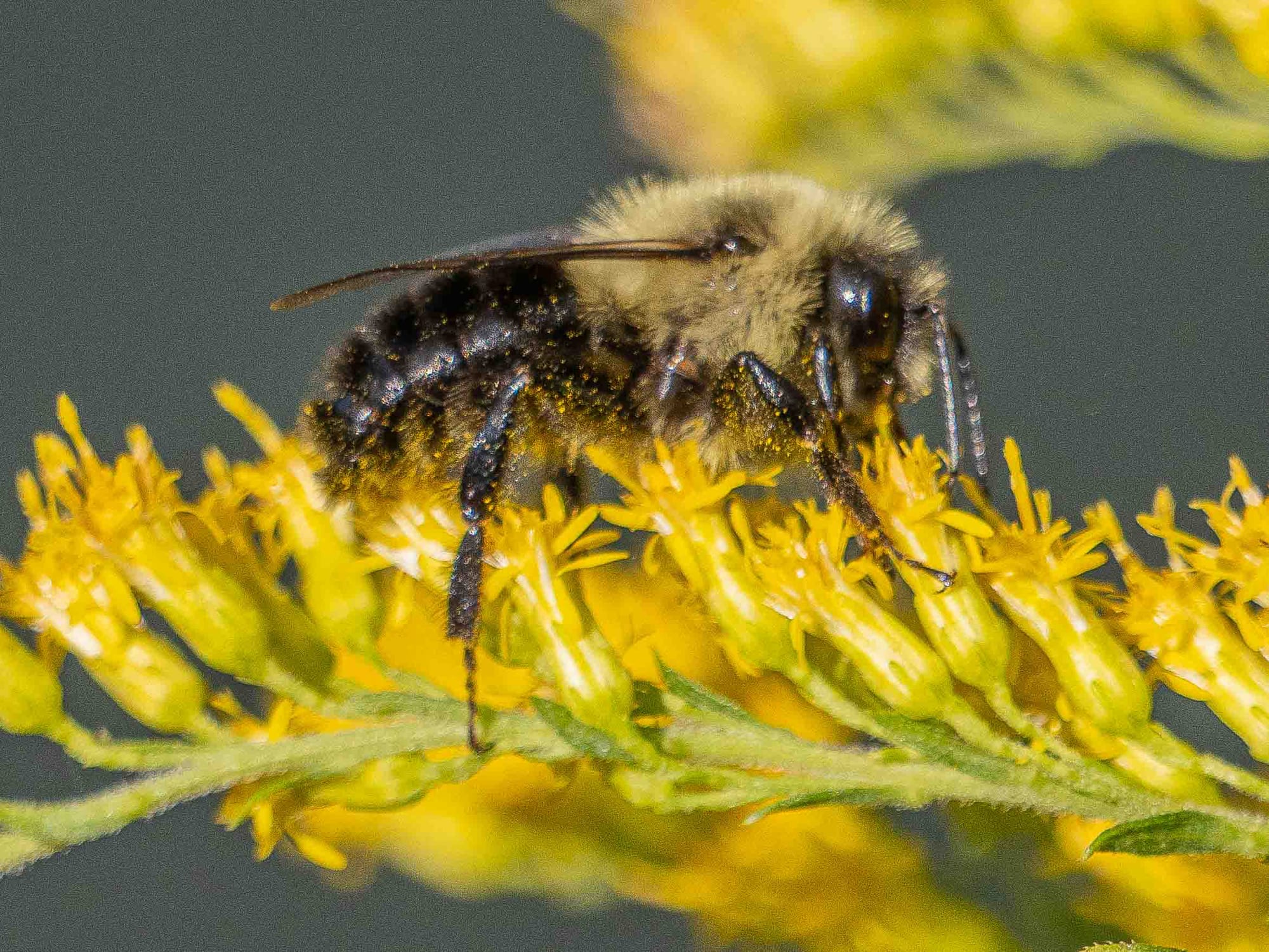
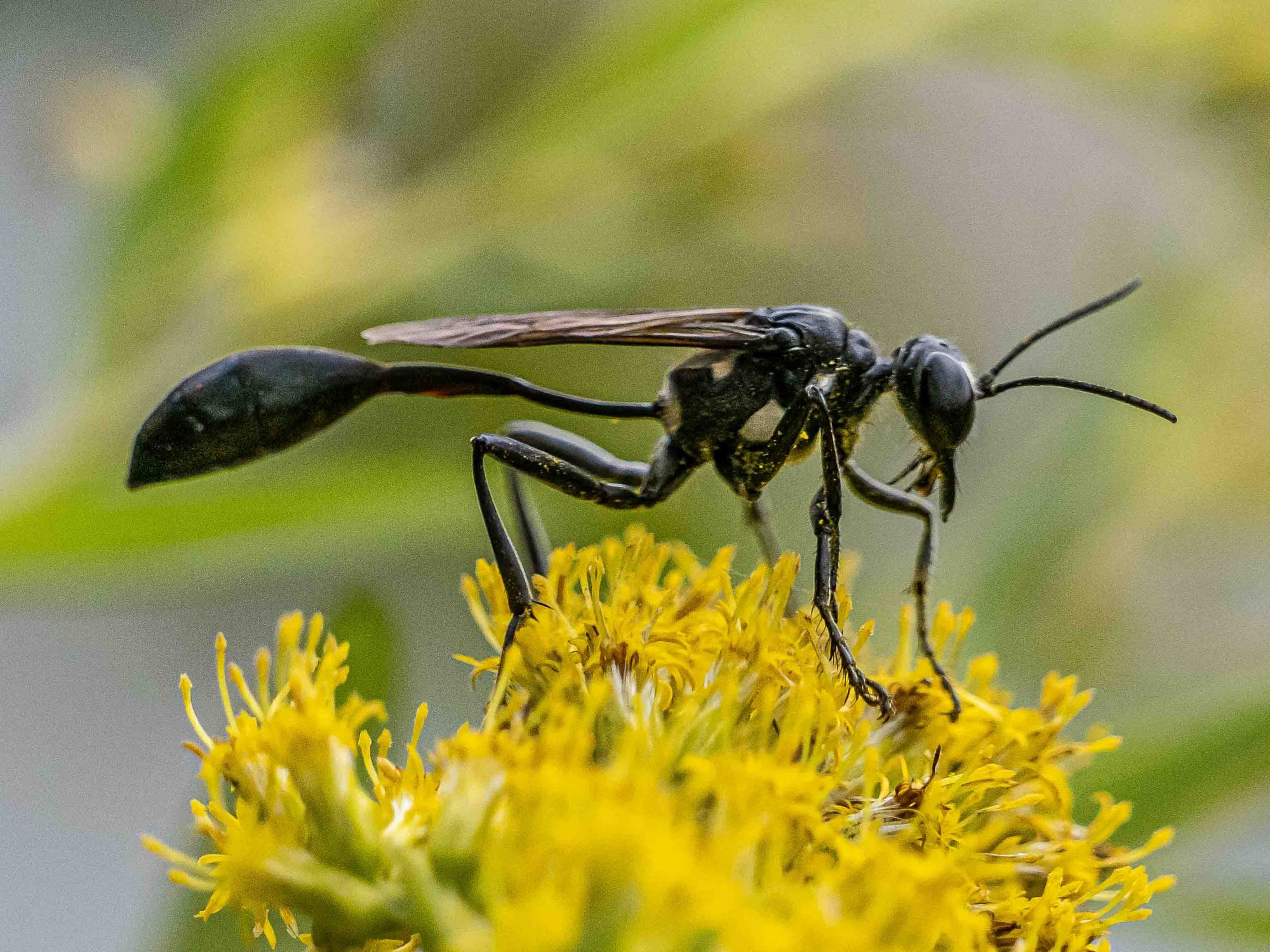
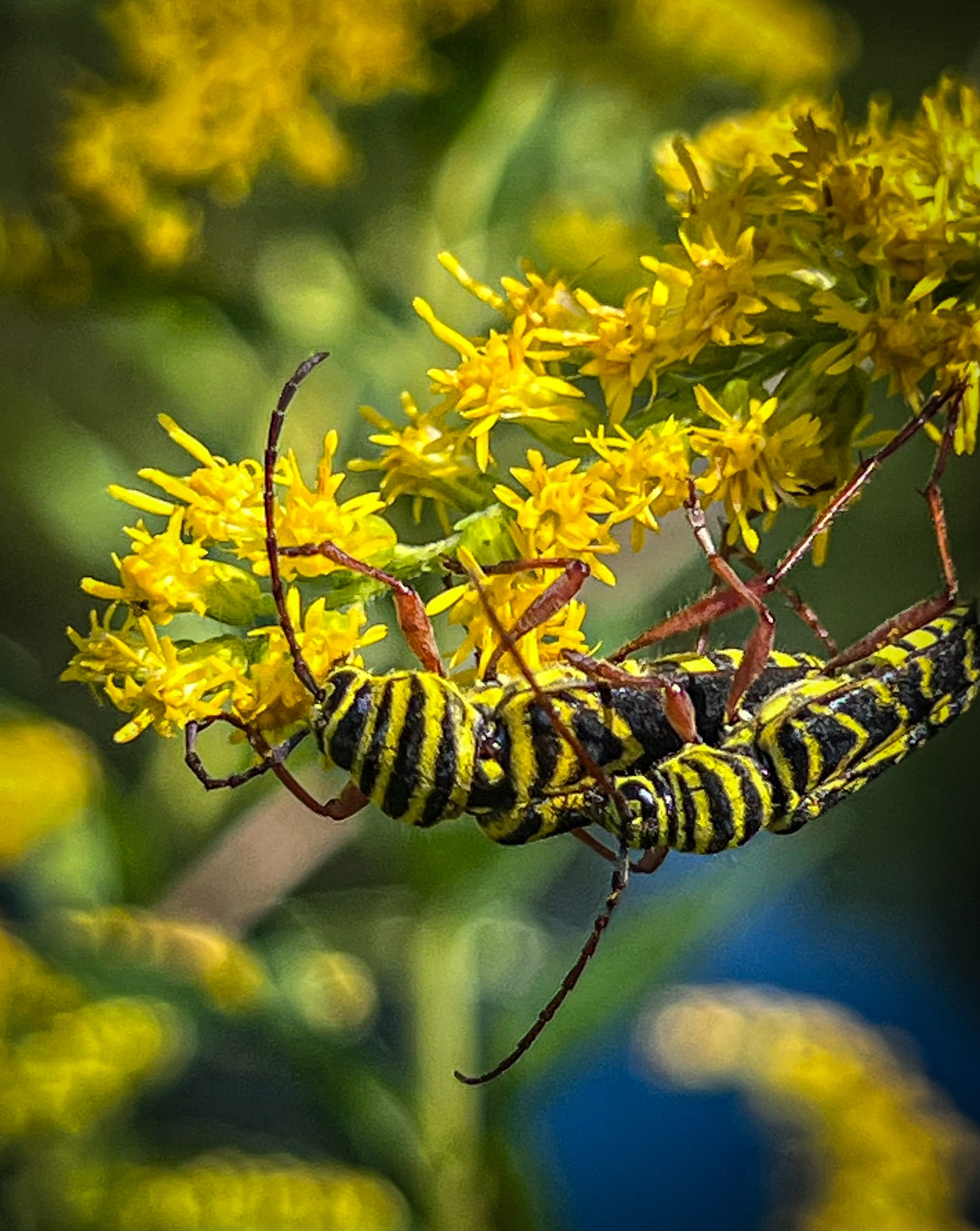
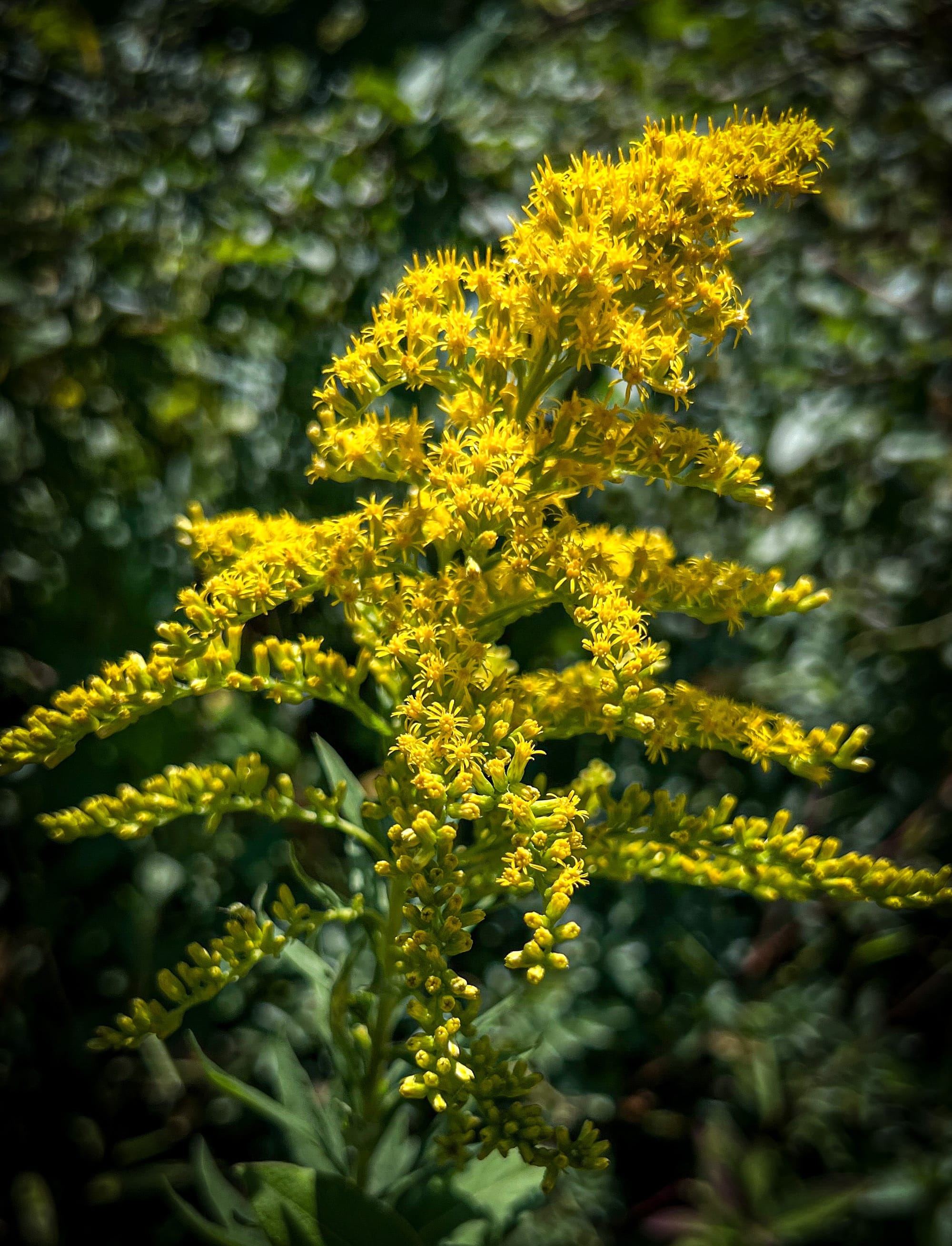
Goldenrod, frequently visited by Fraternal Potter Wasp, Common Eastern Bumblebee, Gold-marked Thread-Waisted Wasp, Locust Borers.
Goldenrods (Solidago species)
Upright stems with bright yellow flower clusters in plumes, sprays, or flat tops. There are around 30 native species of goldenrod in Chester County.
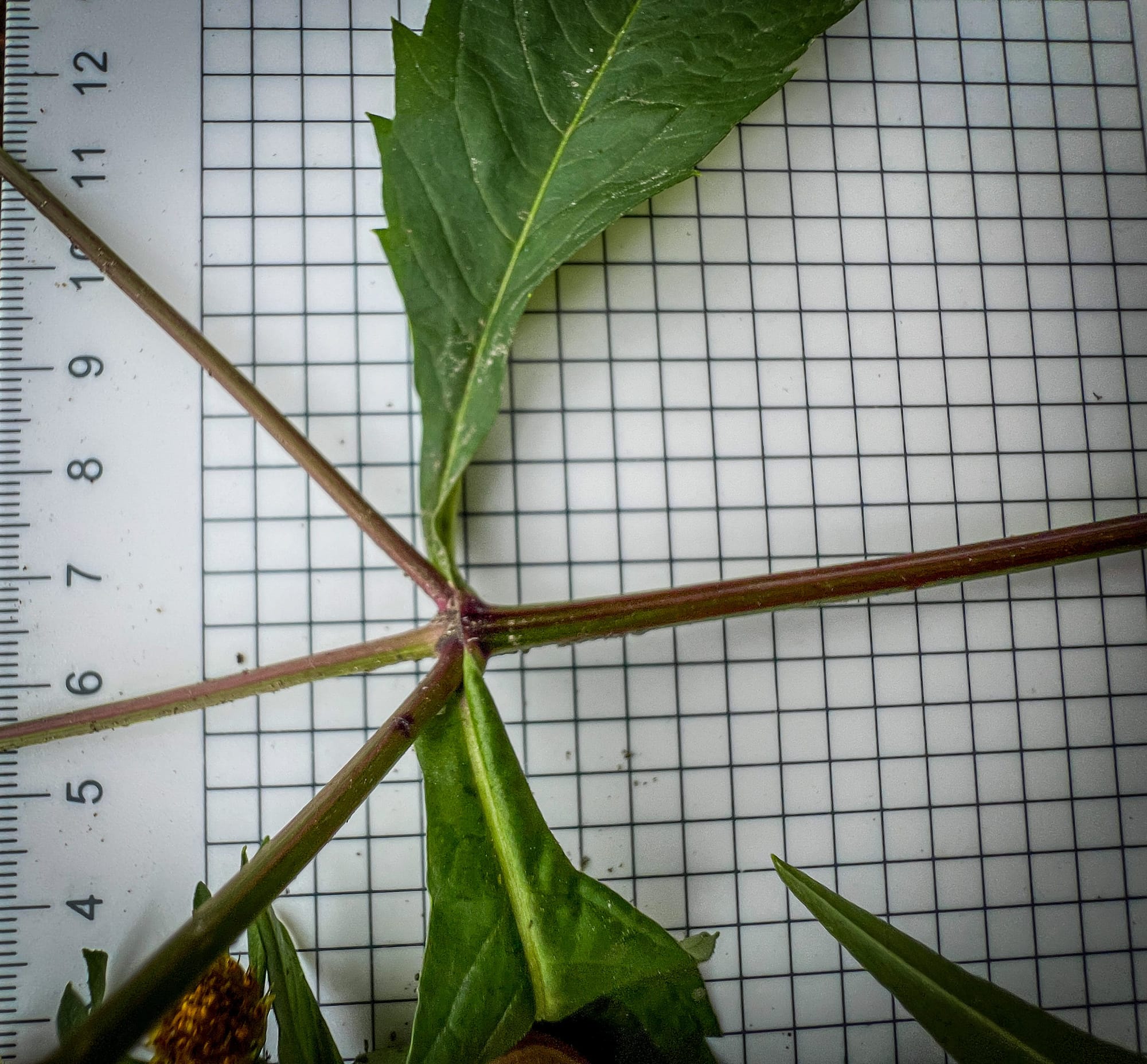
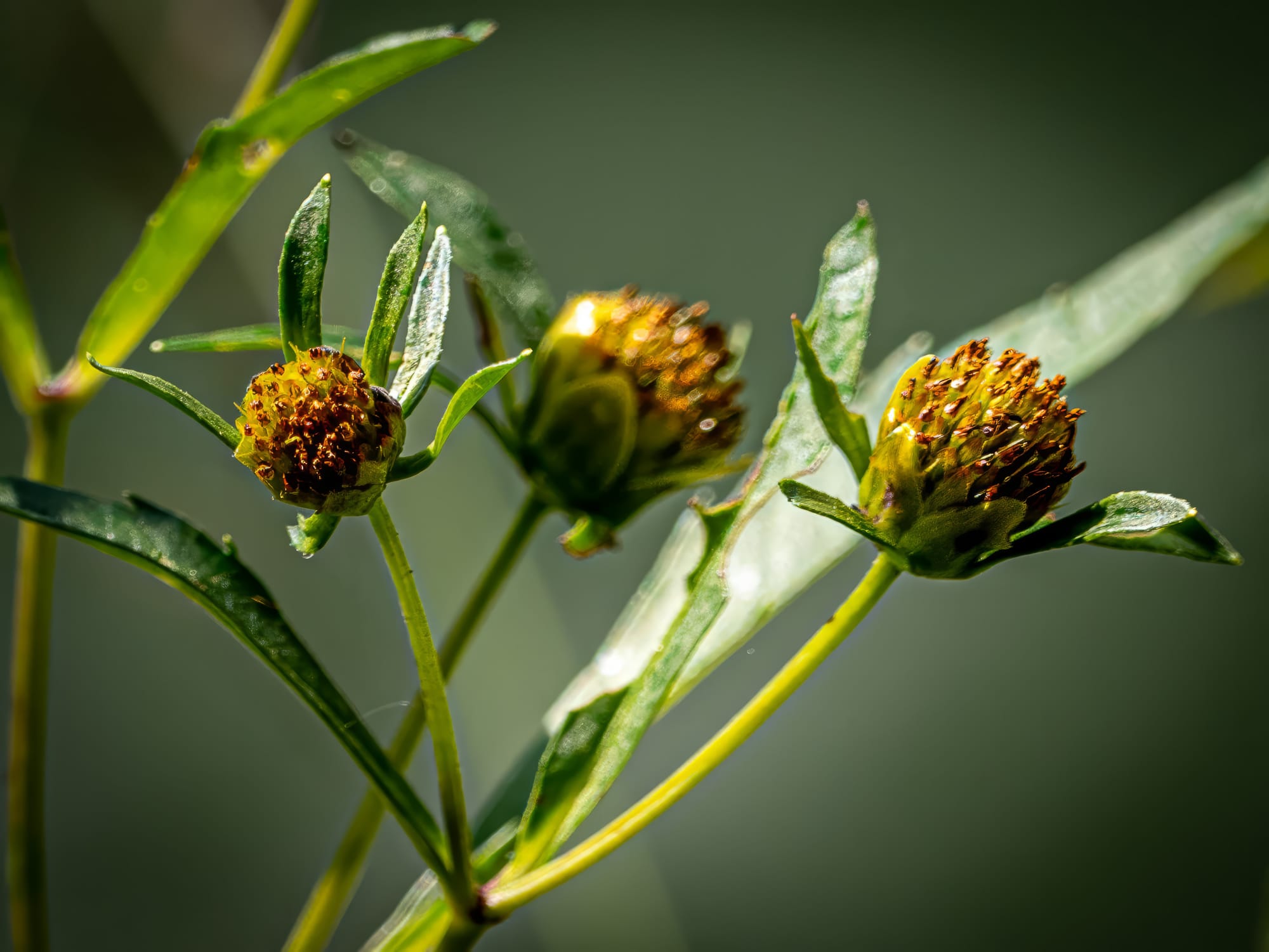
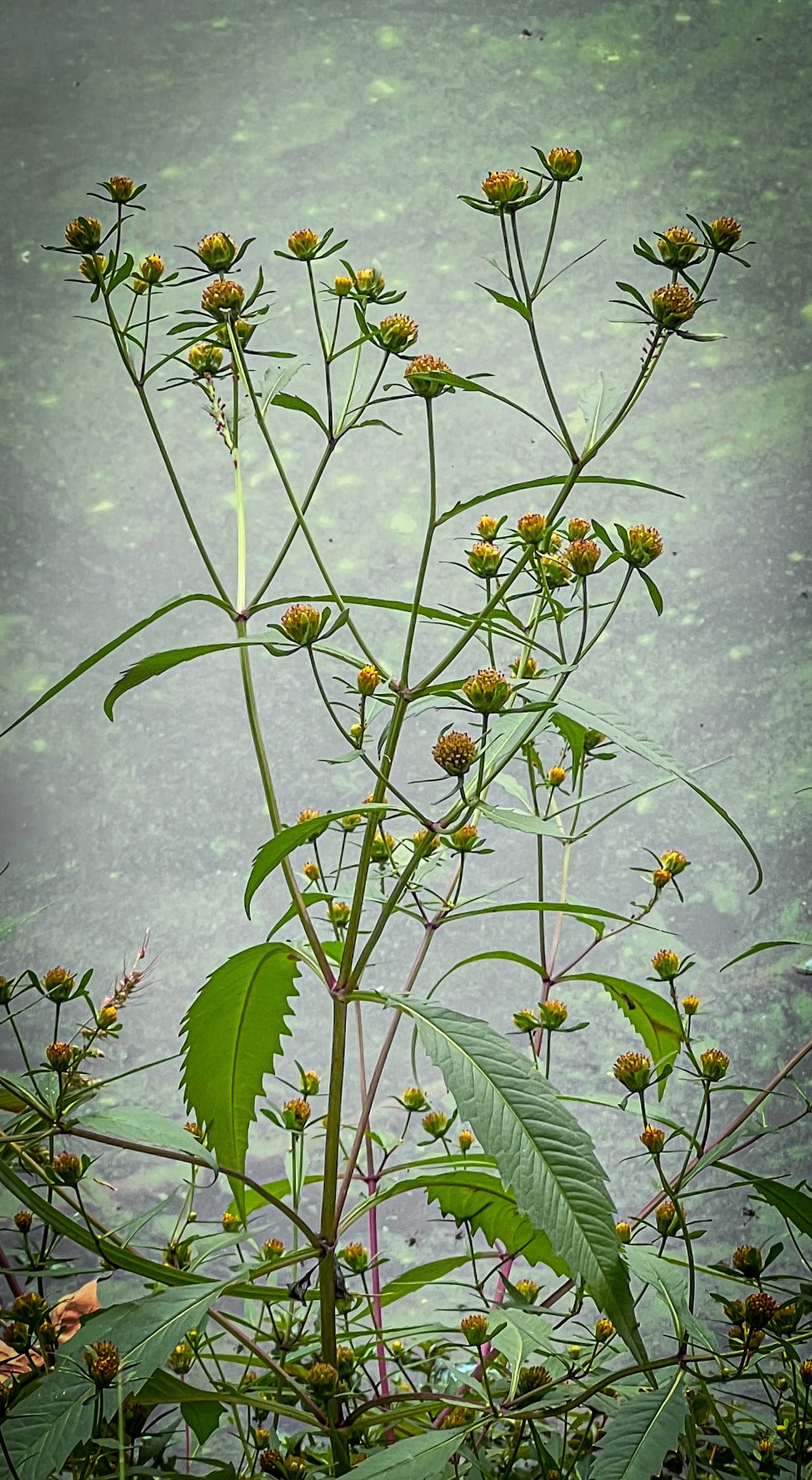
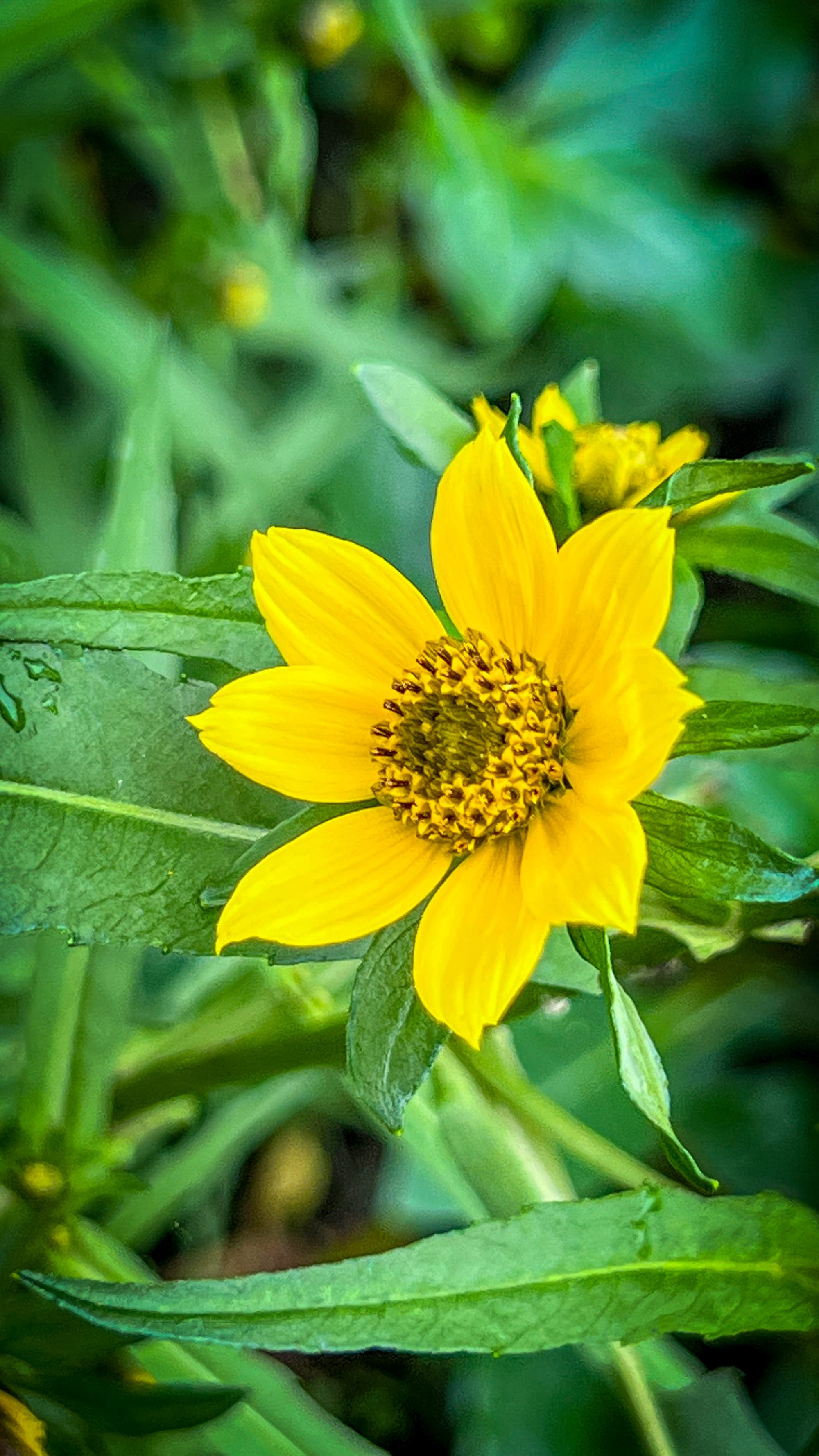
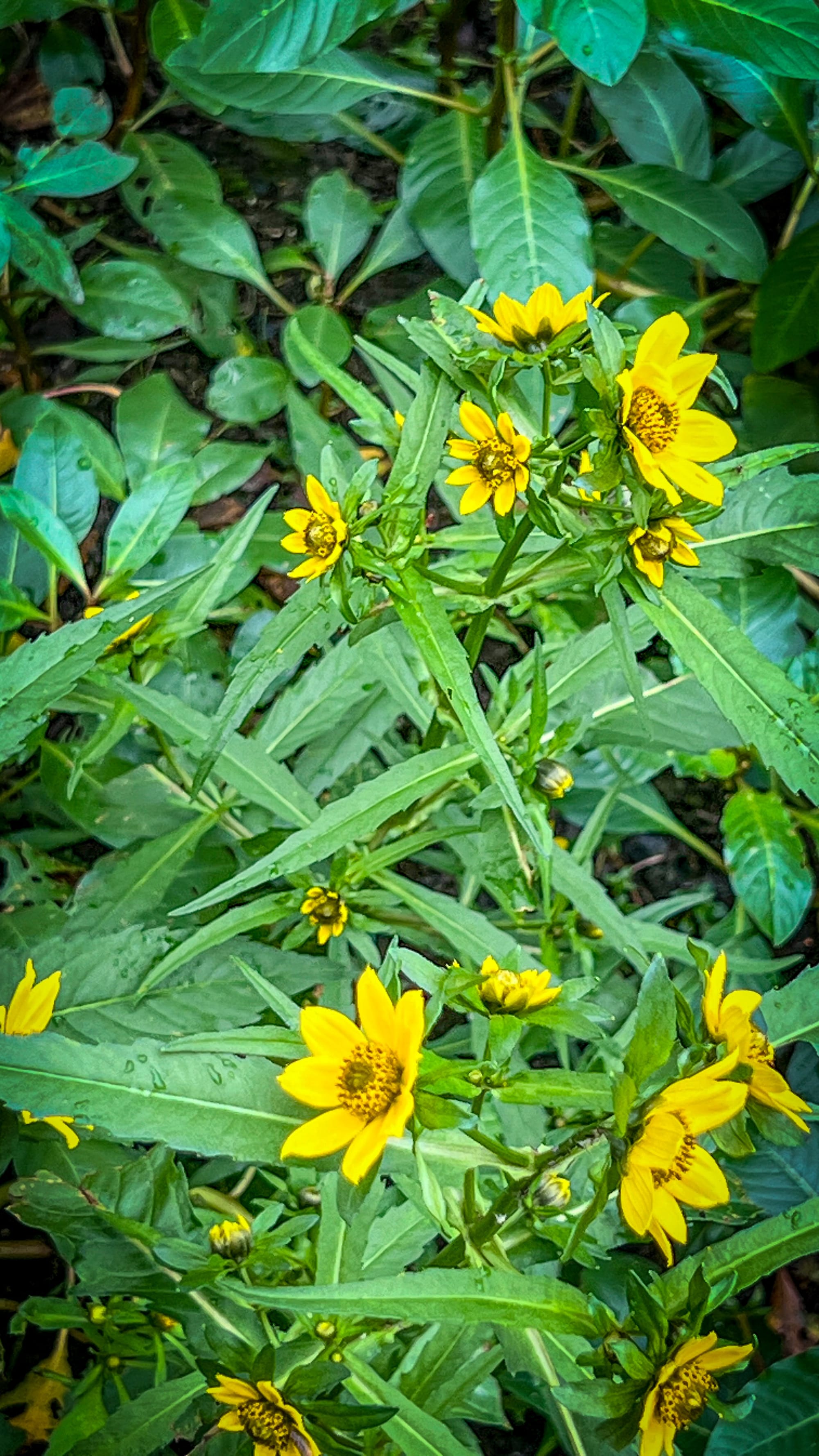
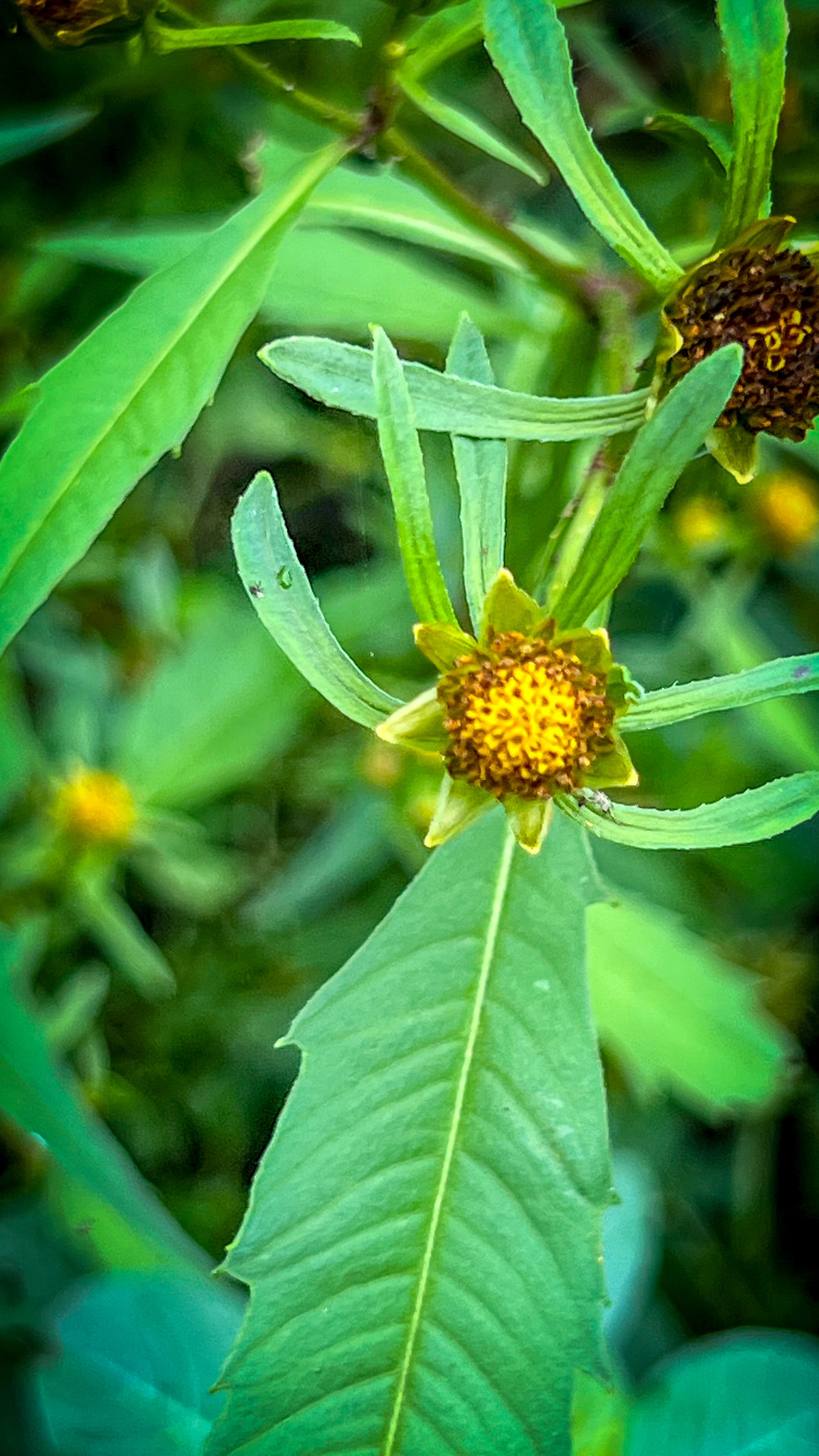
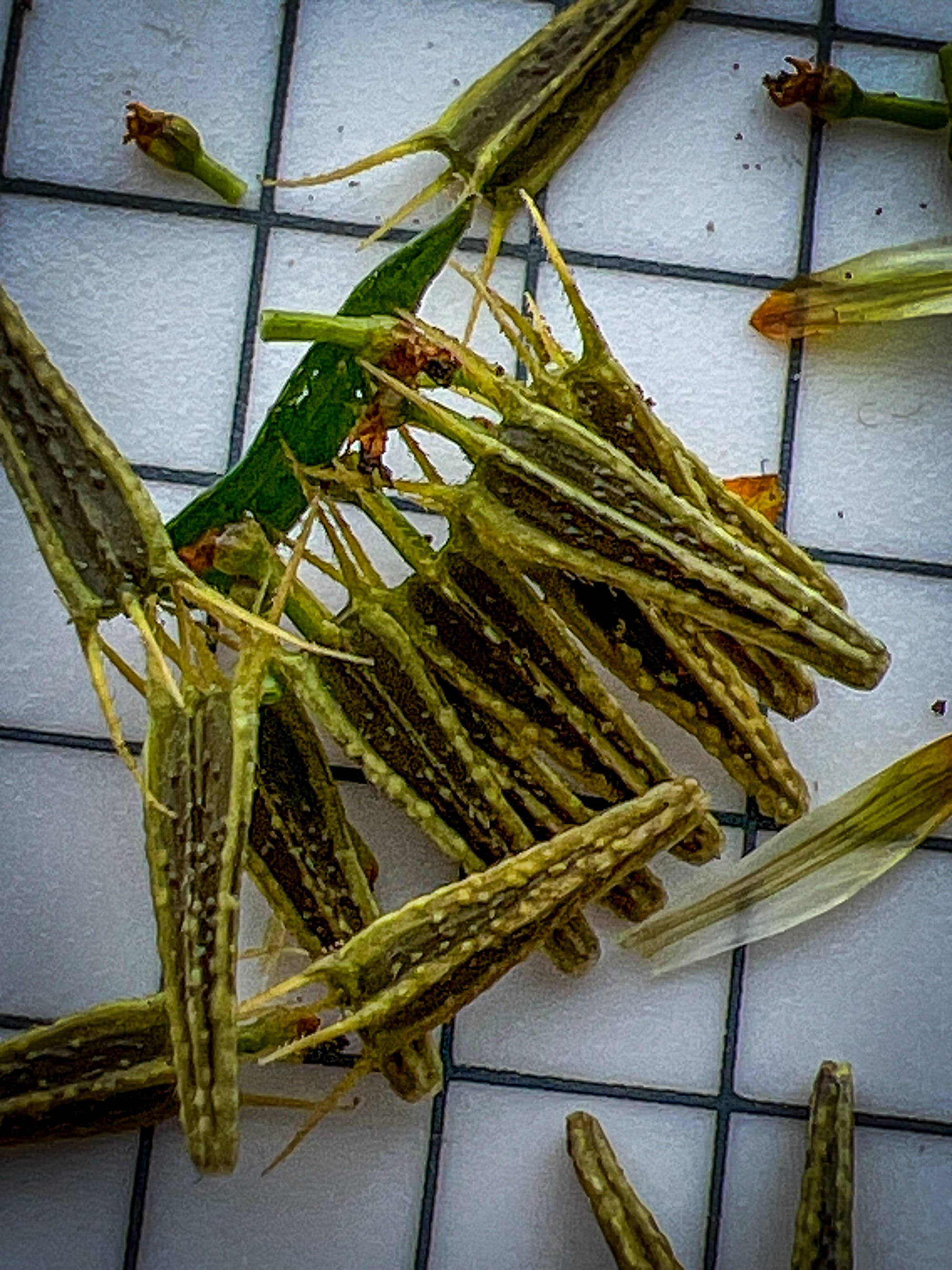
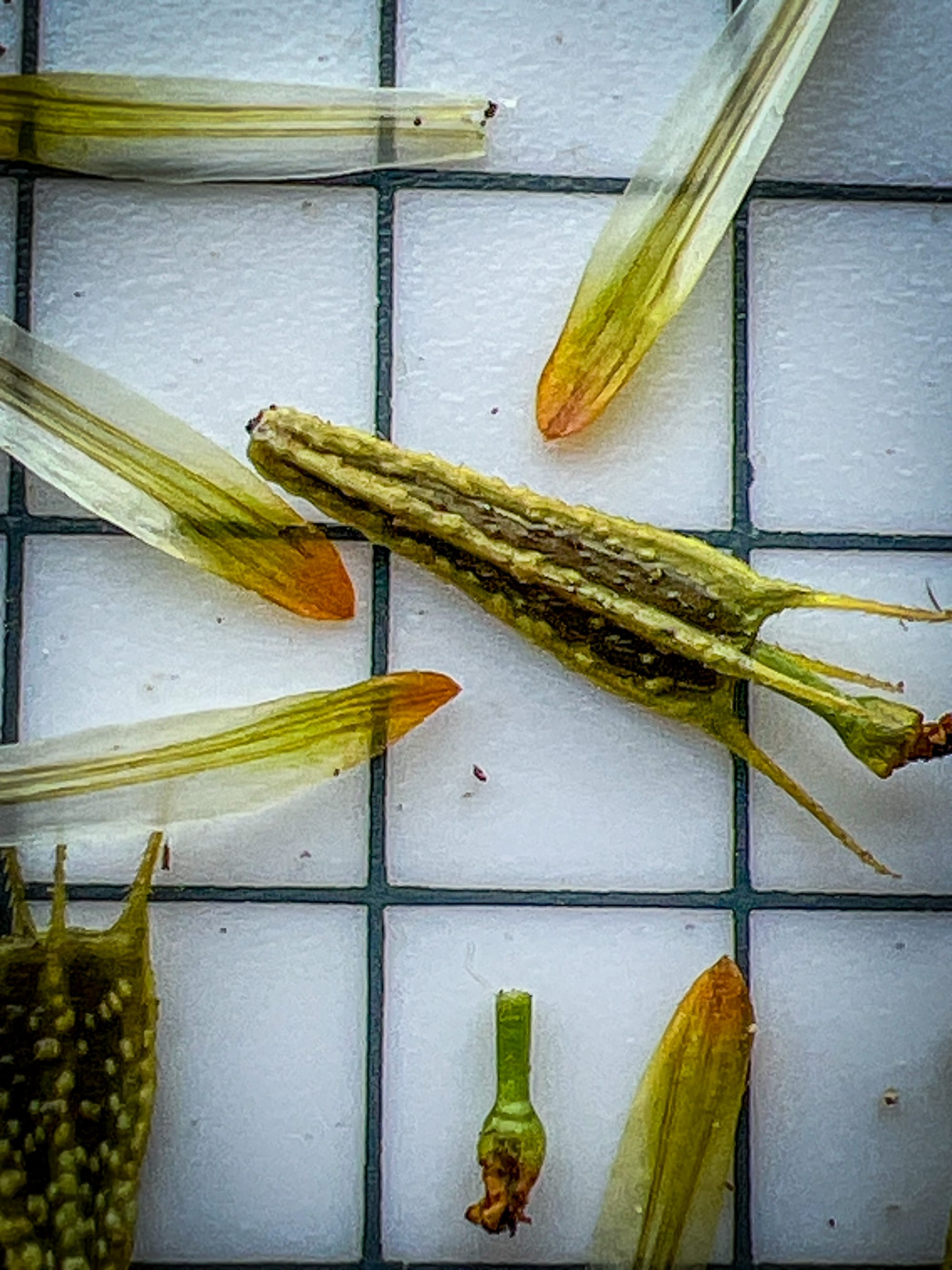
Purplestem Beggarticks
Purplestem Beggarticks (Bidens connata)
Purplish stems, toothed opposite leaves, and small yellow flower heads, often with few or no petals. These grow right at the water's edge. The seeds have tiny barbs that stick to clothing and animal fur.
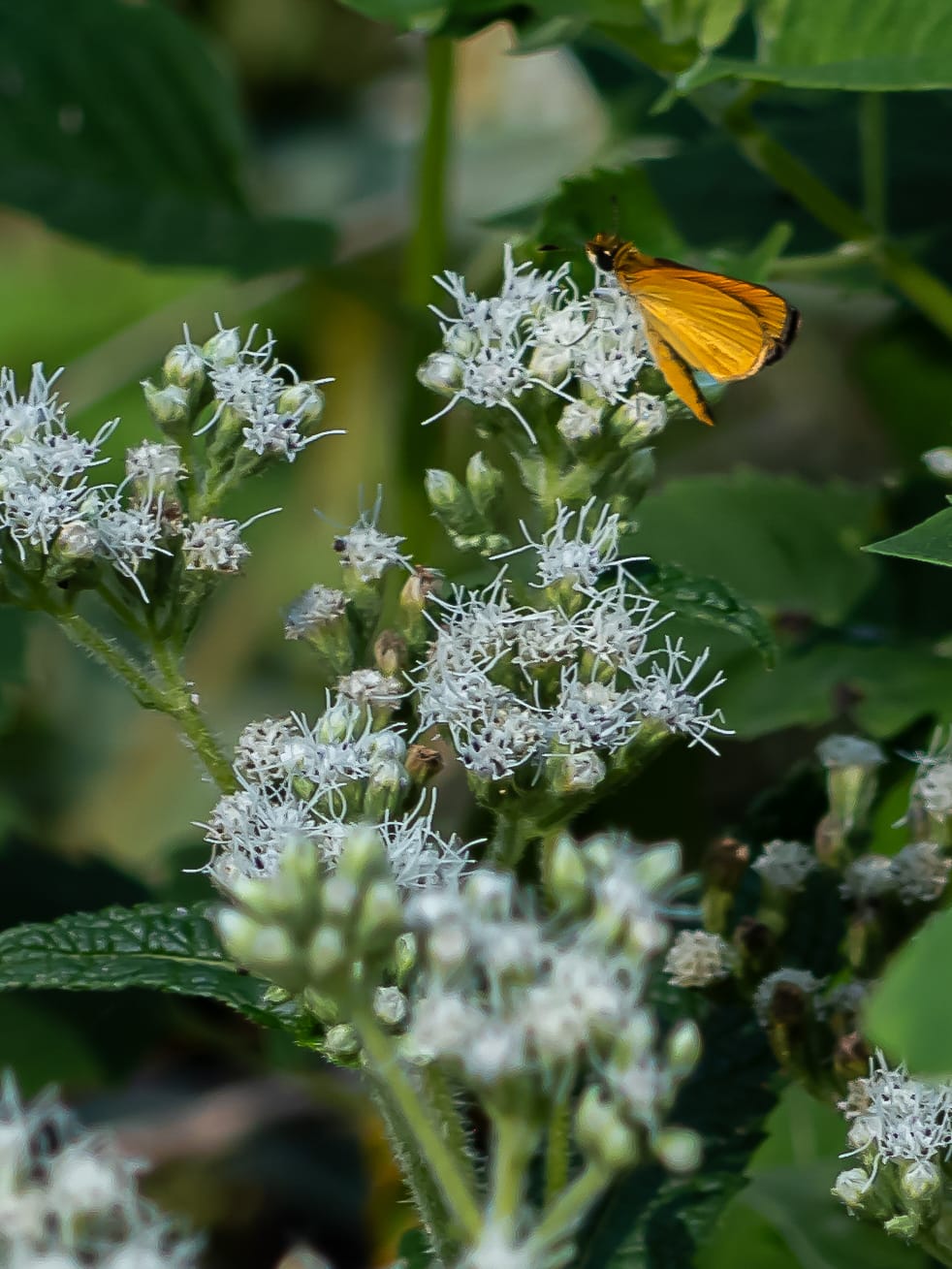
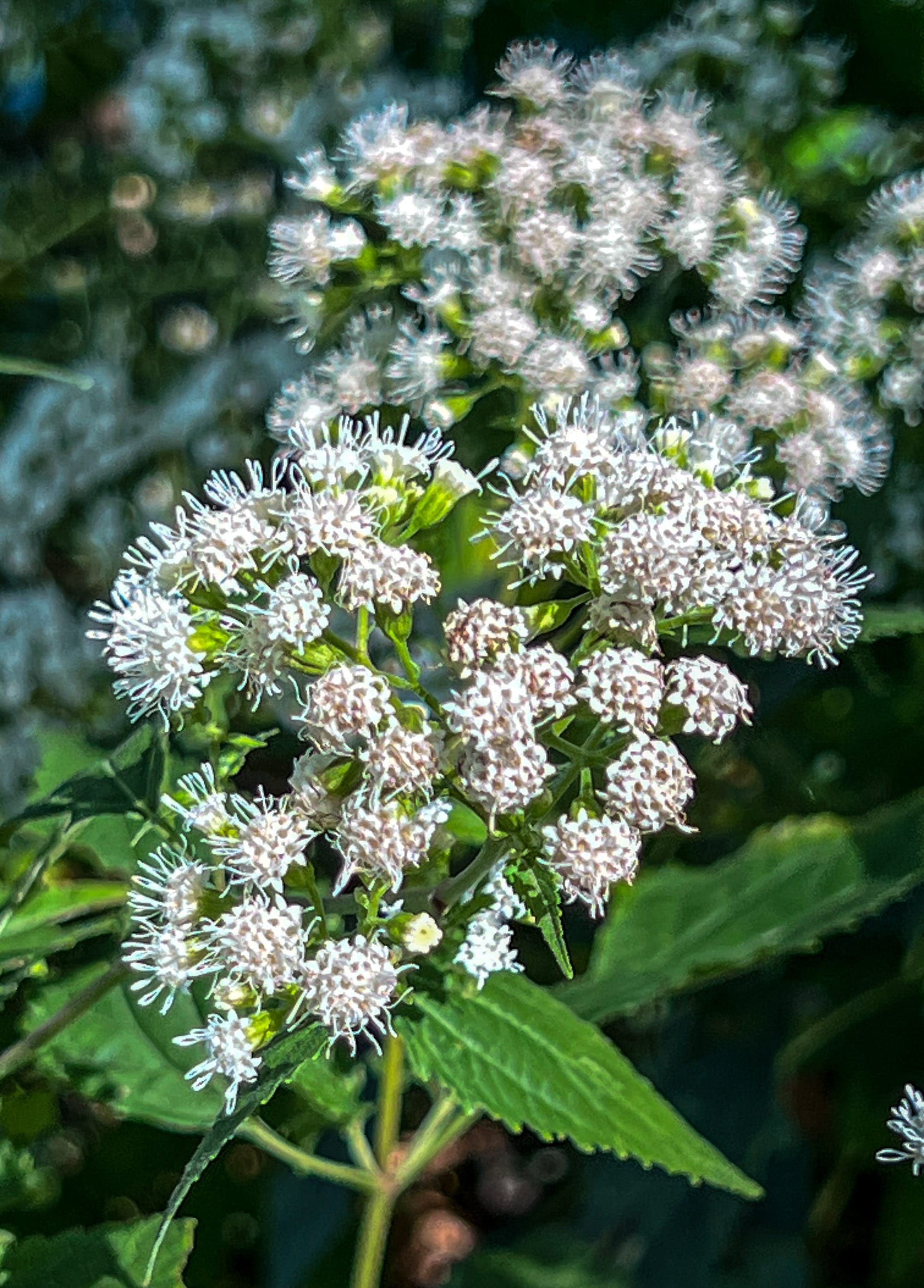
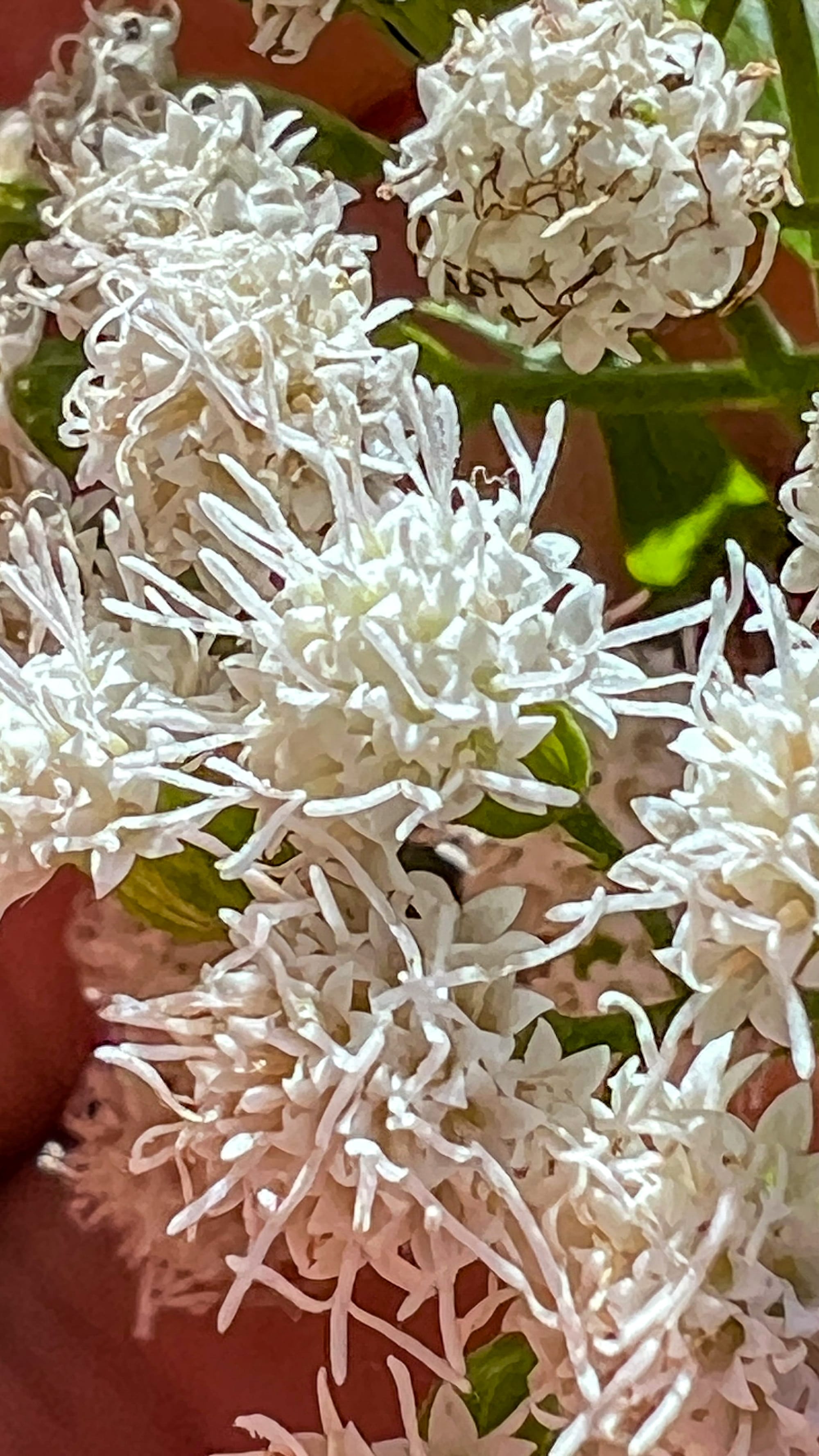
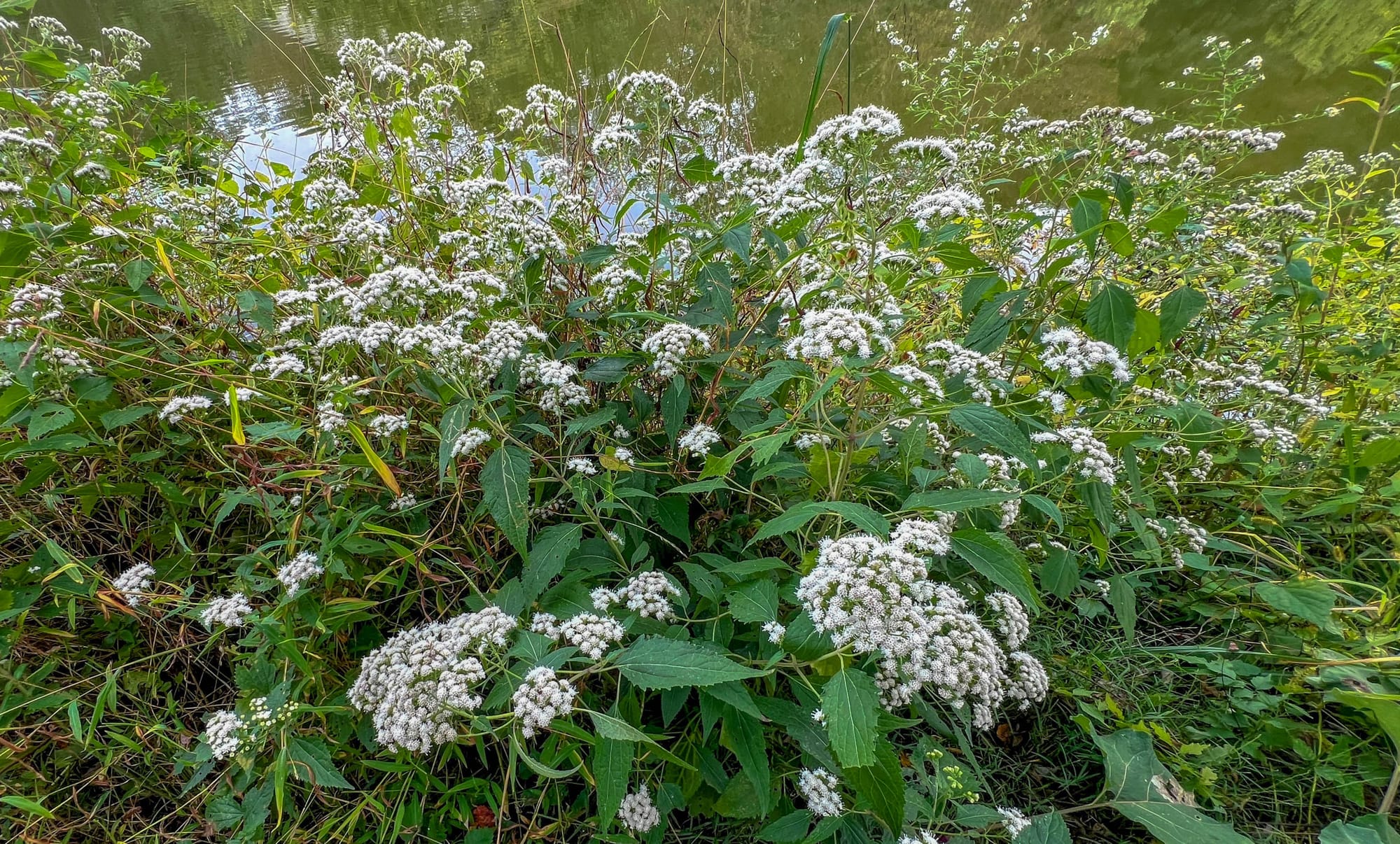
White Snakeroot, that's a Least Skipper in the first photo.
White Snakeroot (Ageratina altissima)
Distinctive fluffy white flower clusters with no petals and toothed opposite leaves, grows in shady spots. Poisonous to livestock but harmless to touch.
In the early 1800's thousands of settlers in the forested upland regions of the east and midwest were killed by Milk sickness, (also known as “trembles” in livestock) caused by tremetol, a toxin found in white snakeroot.
White snakeroot grew in newly cleared pastures, cattle grazed on it, and the toxin passed into their milk. Humans who drank the milk developed the often fatal illness. Indigenous groups such as the Shawnee already understood the plant’s danger, but this knowledge was overlooked by settlers.
In 1818 Nancy Hanks Lincoln, Abraham Lincoln’s mother, died from milk sickness in Indiana. The cause remained a mystery to for decades. In the 1830s–40s, Dr. Anna Pierce Hobbs Bixby in Illinois learned from a Shawnee woman that white snakeroot was responsible. Grazing practices changed, the plant was controlled, and milk sickness outbreaks declined dramatically by the late 19th century.
Buckwheat Family Plants (Polygonaceae)
The smartweeds and tearthumbs are members of the Buckwheat Family (Polygonaceae) with simple flower spikes. Polygonaceae is also from Greek; poly for many and goni for knee or joint. Plants in this family have distinct joints or nodes on the stem. They have tiny flowers on spikes, often in pink or pale shades.
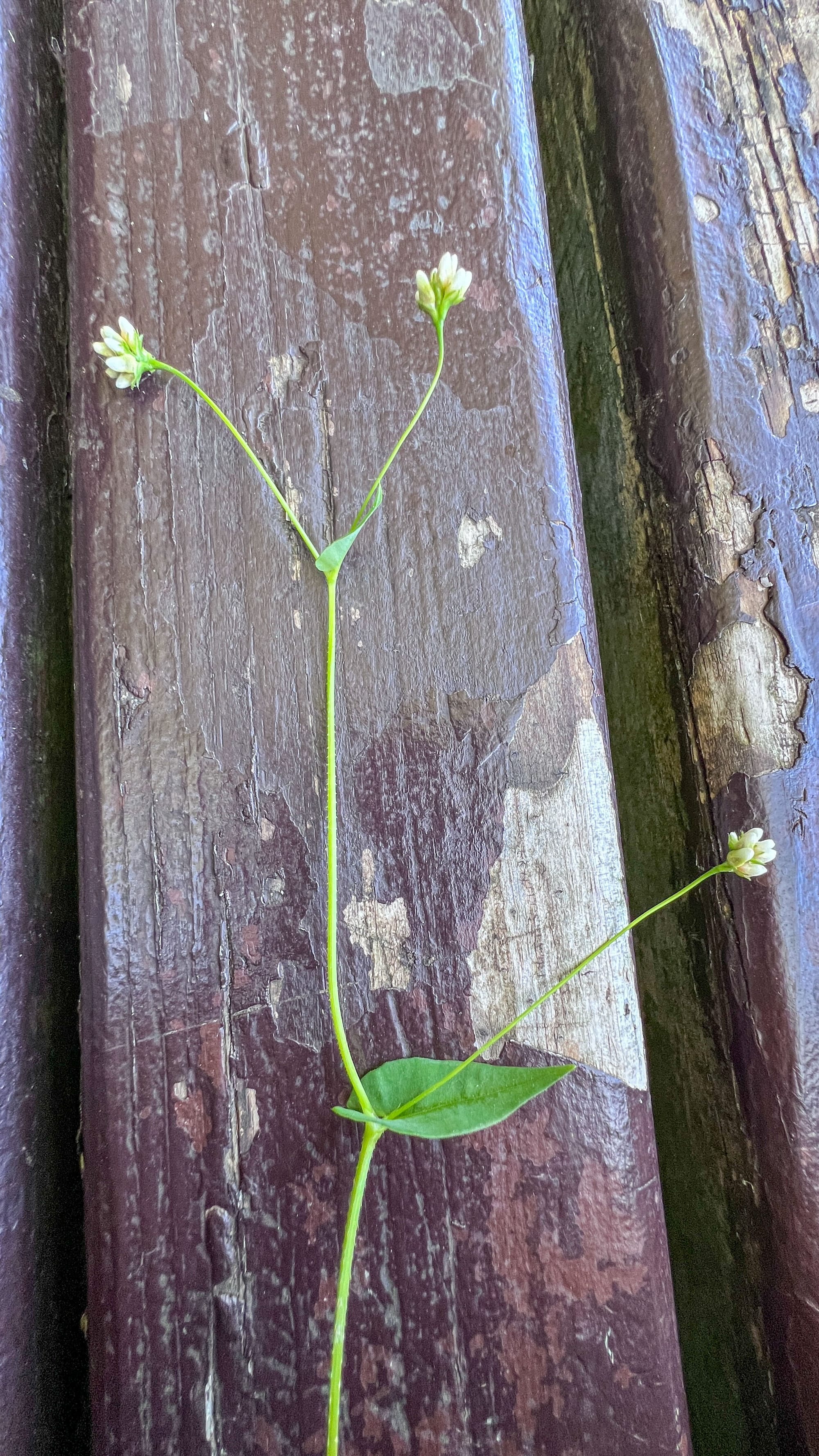
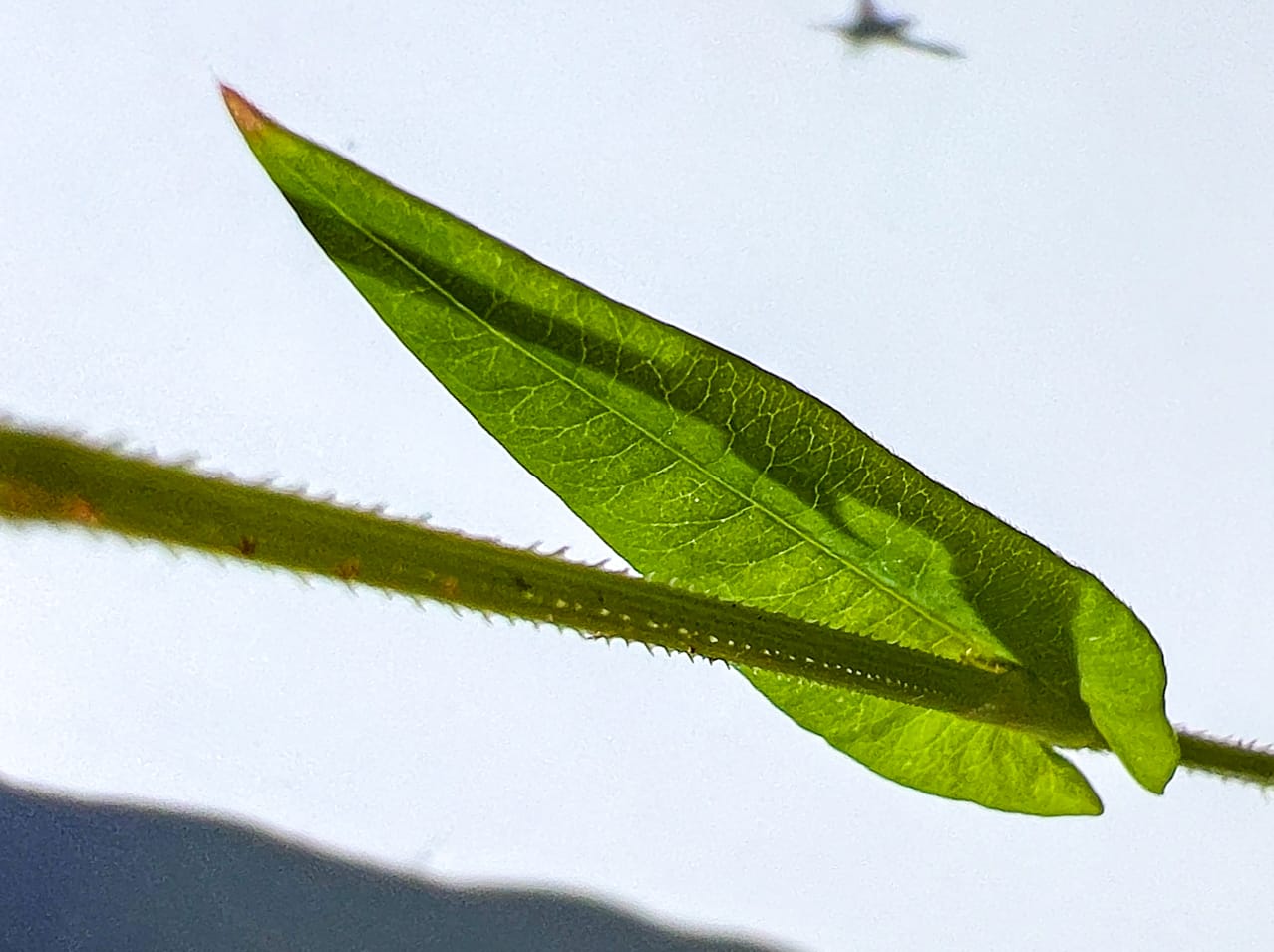
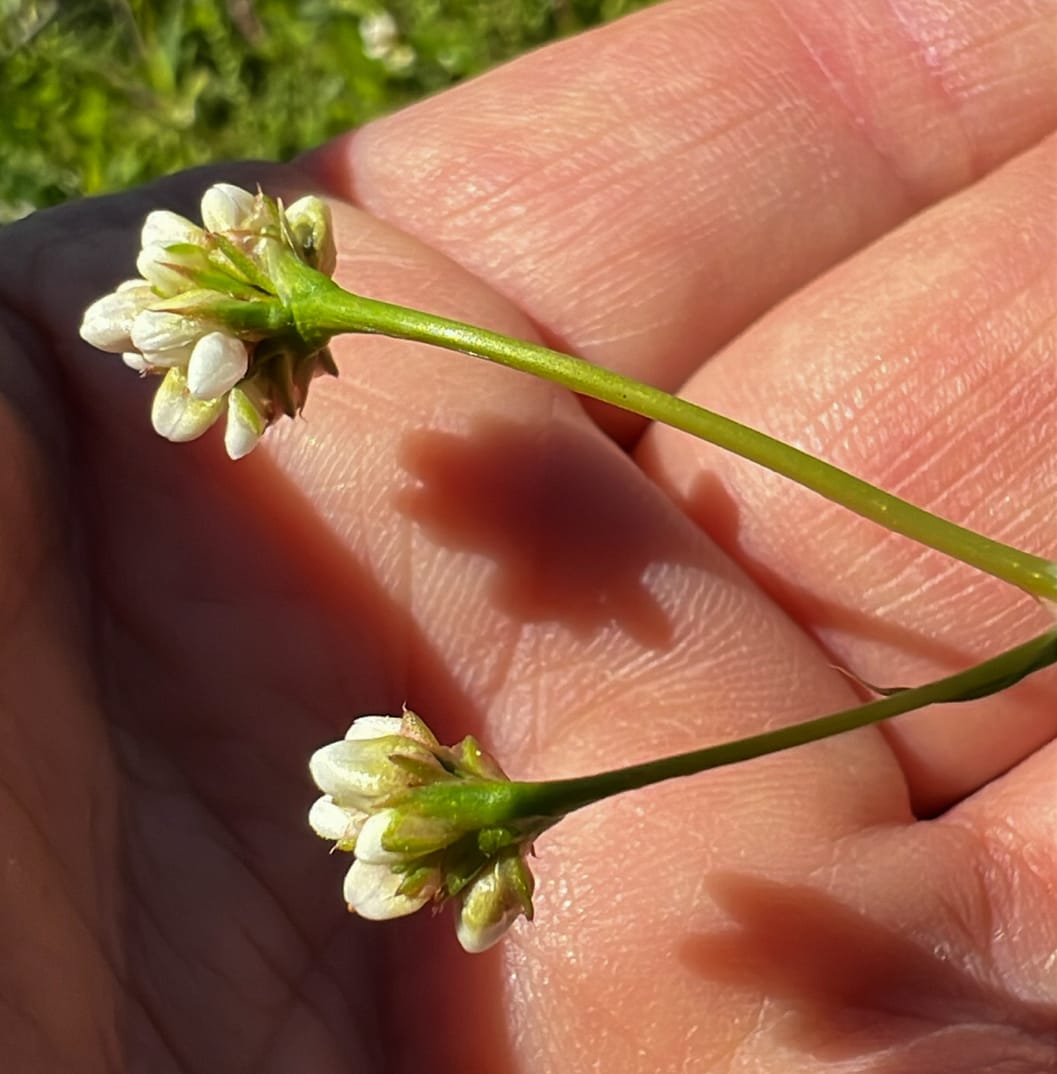
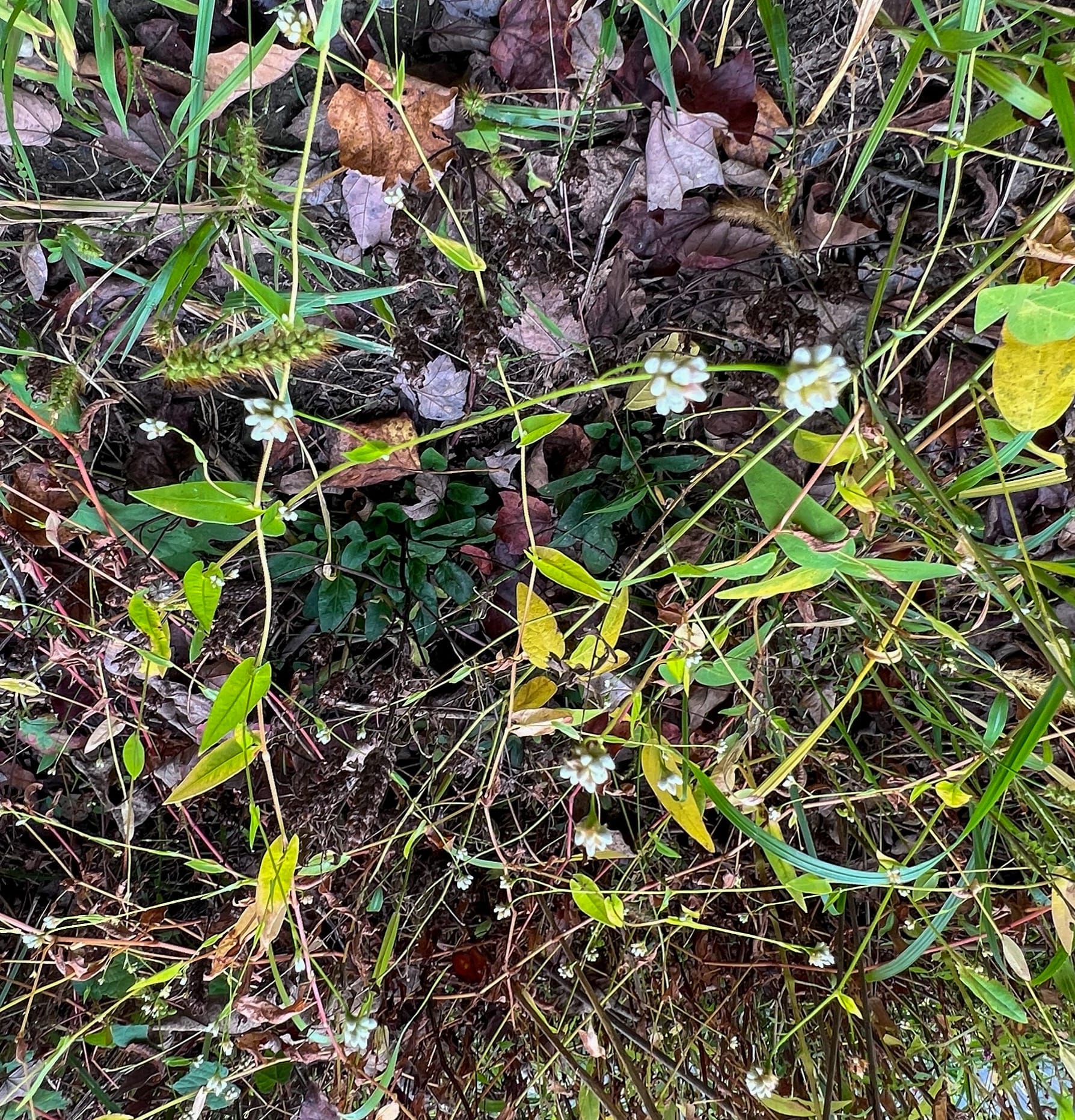
Arrowleaf Tearthumb, those are some very sharp little spikes, this plant's name is a warning!
Arrowleaf Tearthumb (Persicaria sagittata)
Arrow-shaped leaves and prickly stems that grab clothing and skin. Often climbs over nearby plants using its hooked prickles. Doesn't stand out, but if you look for it you'll find it.
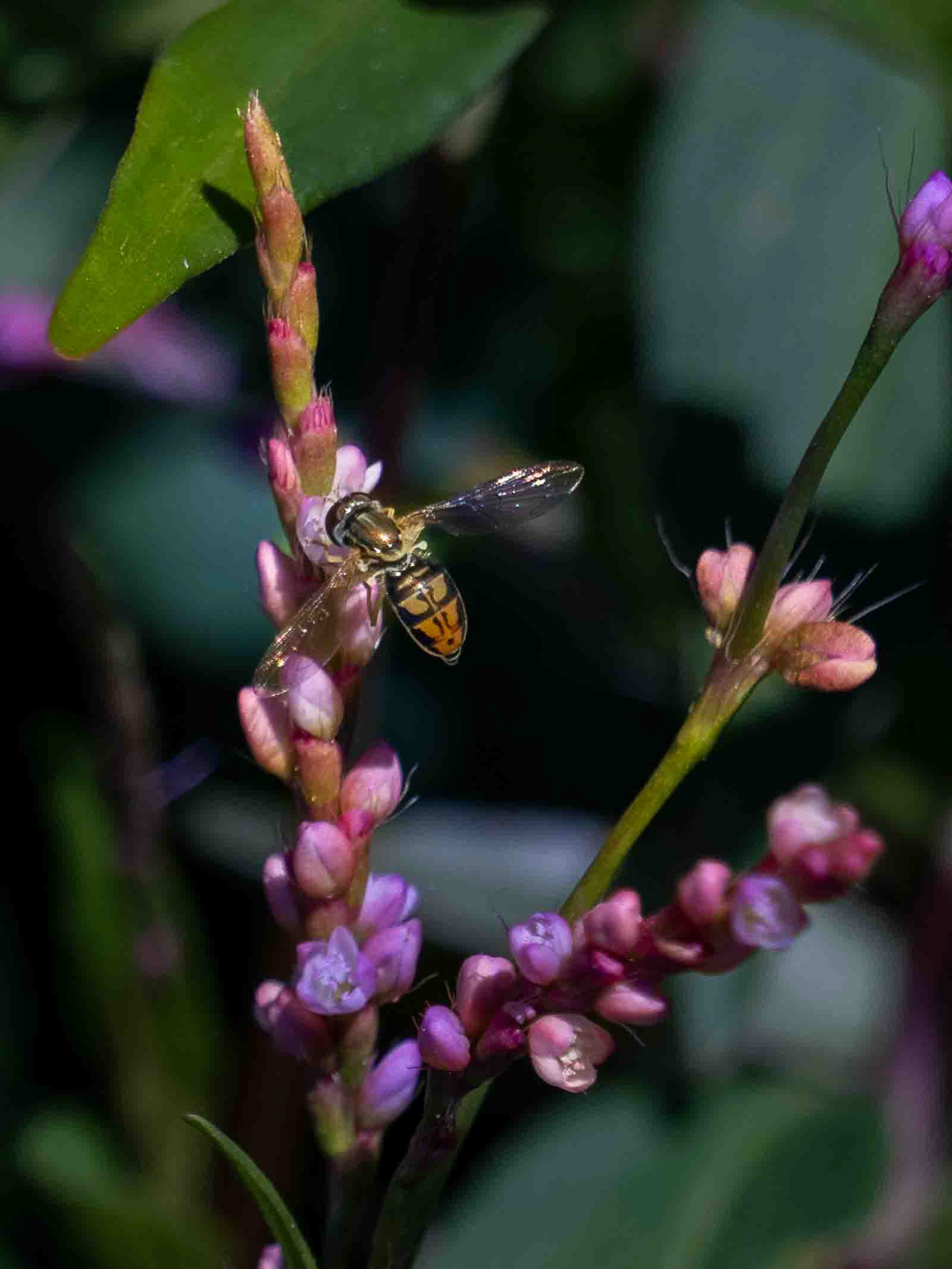
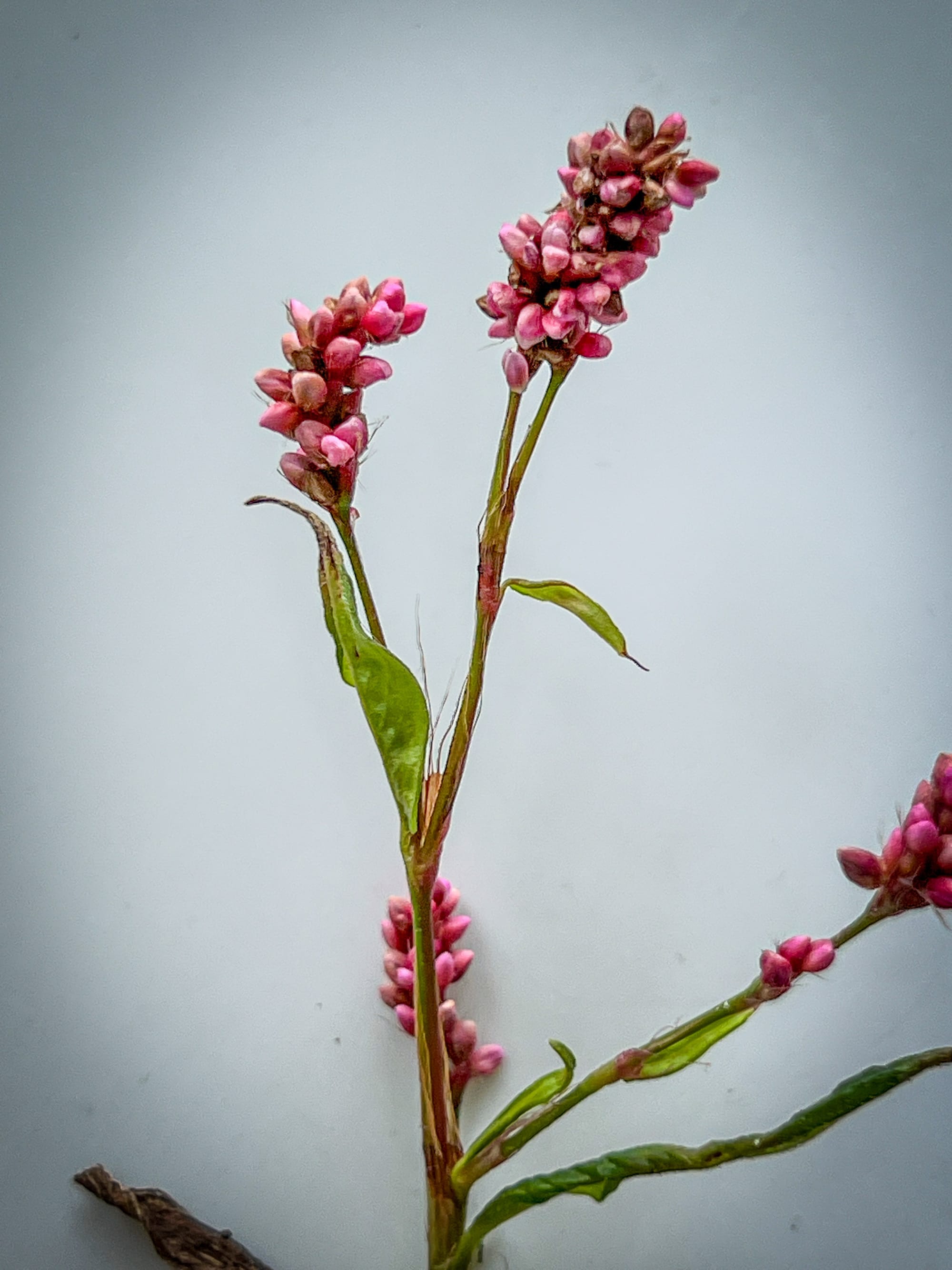
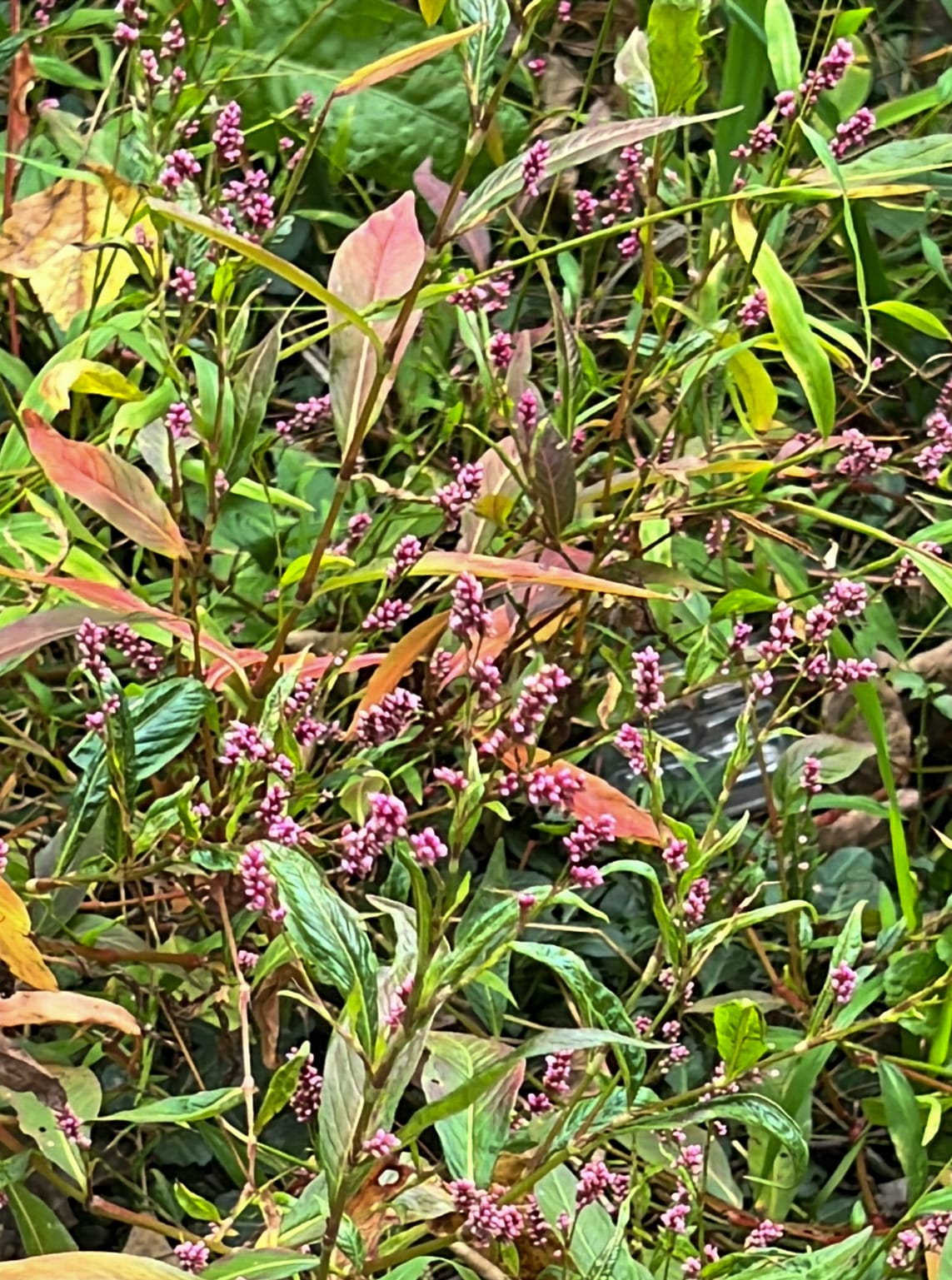
Low Smartweed (being visited by a Calligrapher Fly in the first photo.
Low Smartweed (Persicaria longiseta) — Introduced Species
Lance-shaped leaves with a long bristle at the tip and a fringed, hairy sheath at the base of each leaf, small pink flowers in spikes. Hard not to find this one, it is everywhere!
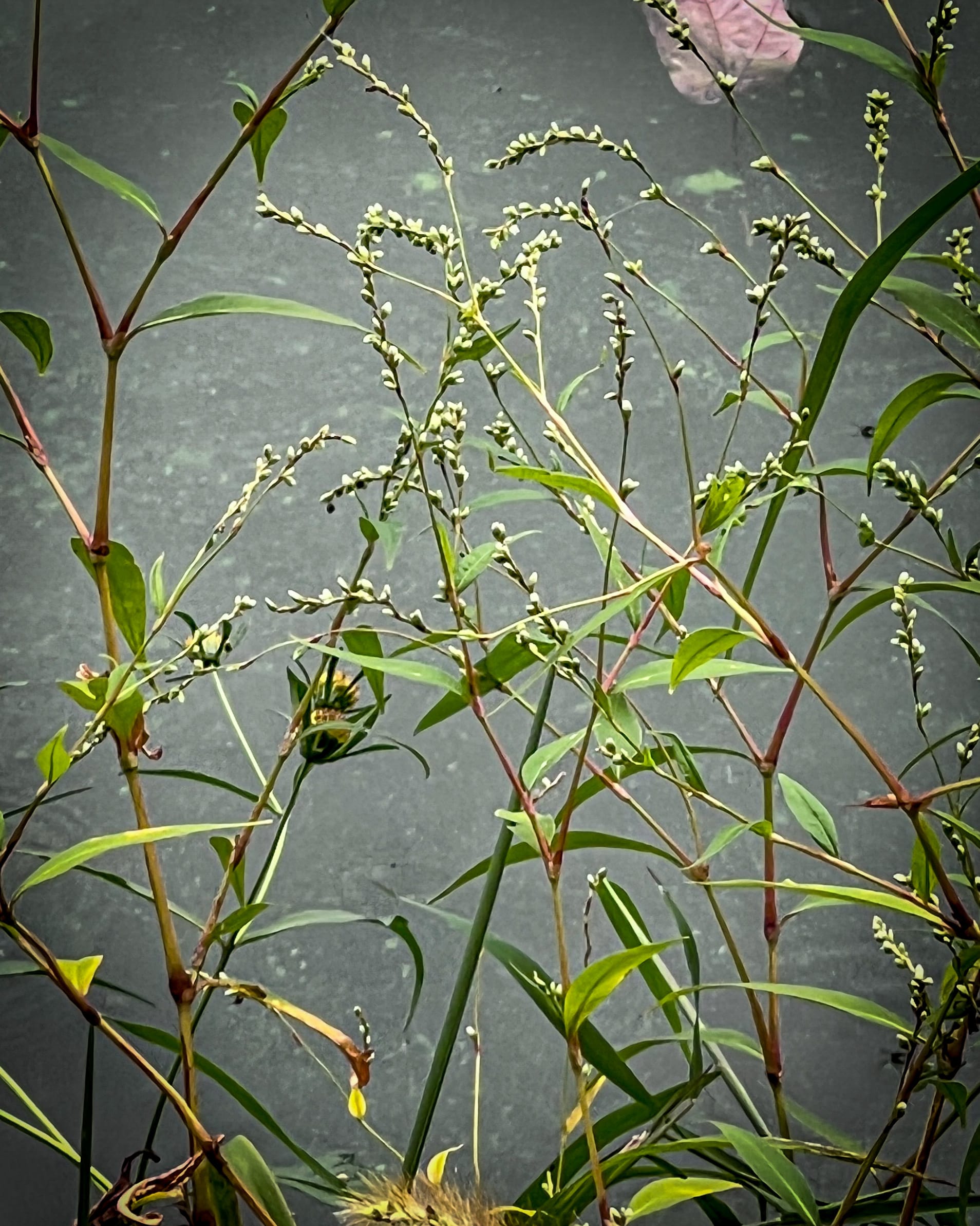
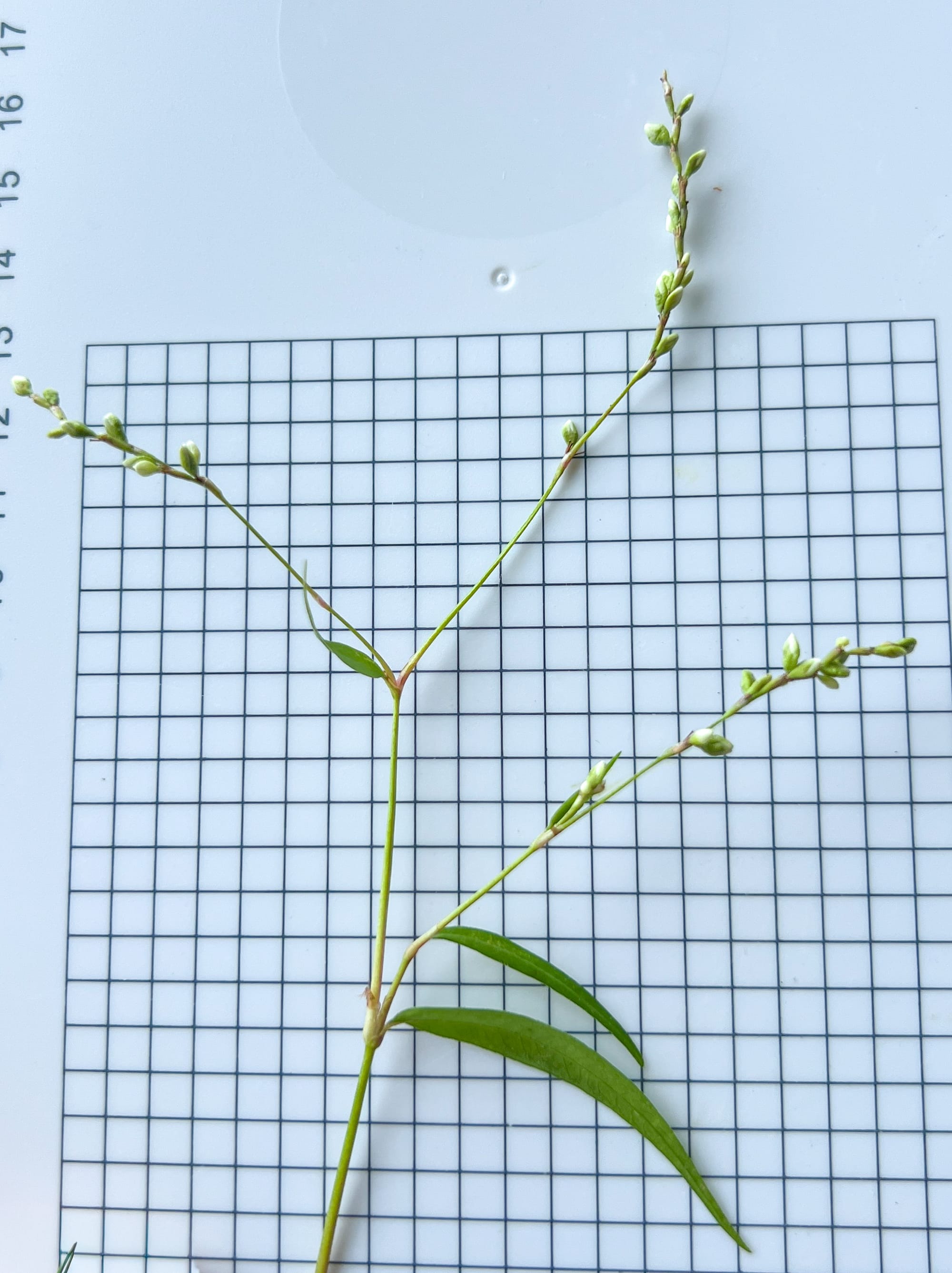
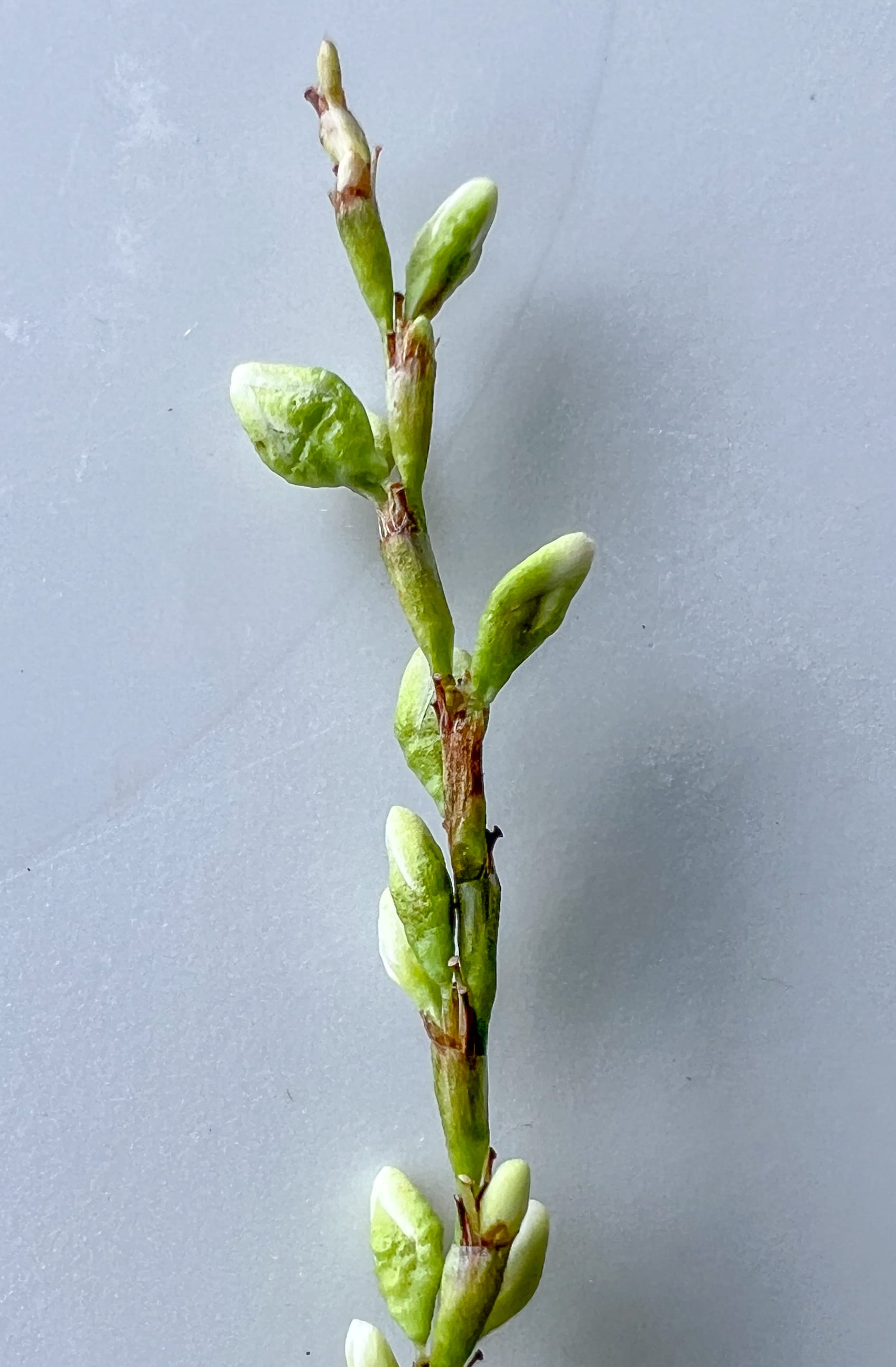
Dotted Smartweed
Dotted Smartweed (Persicaria punctata)
Lance-shaped leaves with tiny translucent dots (hold a leaf to the light), smooth stems, and spikes of small greenish-white flowers. Grows at the waters edge.

